Well it’s the last part of April 2021 and it’s a snow day. 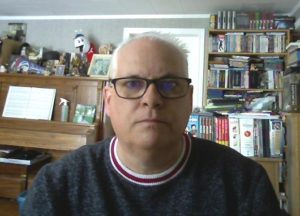 That shouldn’t happen. Oh well, it will all melt in a few days. And to think I assembled a porch swing the other day and the next day cut my grass. You have to love Canada weather! If you have read my two previous blahgs, 12 MONTHS – 12 RECORDS – 12 SONGS & 12 MONTHS – 12 MORE RECORDS – 12 MORE SONGS, you would know that I’ve been having fun posting about some of the vinyl LPs I’ve purchased over the past year. I had a lot of fun assembling those two blahgs but I was busy at the same time looking ahead to this blahg.
That shouldn’t happen. Oh well, it will all melt in a few days. And to think I assembled a porch swing the other day and the next day cut my grass. You have to love Canada weather! If you have read my two previous blahgs, 12 MONTHS – 12 RECORDS – 12 SONGS & 12 MONTHS – 12 MORE RECORDS – 12 MORE SONGS, you would know that I’ve been having fun posting about some of the vinyl LPs I’ve purchased over the past year. I had a lot of fun assembling those two blahgs but I was busy at the same time looking ahead to this blahg.
I’ll mention three other blahgs I wrote last year that helped to inspire this current blahg. My three part Linda Keene series, TRACING LINDA KEENE, PART 1: THE FLORENCE SUTTLE YEARS, TRACING LINDA KEENE, PART 2: THE MOMENT IN MY LIFE, TRACING LINDA KEENE, PART 3: ONE MORE FOR THE ROAD, was very labour intensive. I spent a great deal of time researching Linda Keene and perusing through old newspaper articles to assemble a narrative of Linda Keene’s career. One thing I learned, outside of all of the things I learned about Linda Keene, was that there were many big bands and orchestras in the mid and late 1930s and through the 1940s that we no longer remember. So, I thought I would look at some of those forgotten bands that specifically were associated in some way with Linda Keene. I’ll try to provide some information of these orchestras and some recordings where I can. This blahg will be an assemblage of information and recordings and images from various sources. I’ve done the research and now you get to enjoy reading it.
In part one of my Linda Keene series I detailed how she was born Florence McCrory in December of 1911 and later married Sturgeon Suttle in September of 1931. She performed under her married name of Florence Suttle in the early 1930s and toured with her husband who billed himself as “Frank Suttle.” The first reference I found for the couple performing with any orchestra was from the August 3, 1934 Detroit Times, below, where they were performing at the Oriole Terrace as part of a floor show including Bob Chester and His Music. 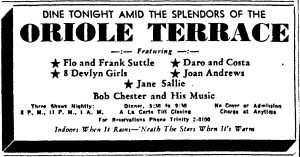 It is not clear if Florence Suttle performed with Bob Chester and His Orchestra but for the purposes of this blahg, Bob Chester’s band will be the first forgotten band we’ll look at.
It is not clear if Florence Suttle performed with Bob Chester and His Orchestra but for the purposes of this blahg, Bob Chester’s band will be the first forgotten band we’ll look at.
With some of the bands I’ve tracked, there is very little information about the orchestra or what might have happened to them. Not so with Bob Chester. There is even a Wikipedia entry for Bob Chester although there isn’t more than really a page of information”
Bob Chester (March 20, 1908 – June 14, 1977) was an American jazz and pop music bandleader and tenor saxophonist.
Chester’s stepfather ran General Motors’s Fisher Body Works. He began his career as a sideman under Irving Aaronson, Ben Bernie, and Ben Pollack. He formed his own group in Detroit in 1939, with a Glenn Miller-influenced sound. This band was unsuccessful in local engagements and quickly dissolved. He then put together a new band on the East Coast under the direction of Tommy Dorsey and with arrangements by David Rose. This ensemble fared much better, recording for Bluebird Records.
Chester’s group, billed “The New Sensation of the Nation,” had its own radio show on CBS briefly in the fall of 1939. The twenty-five-minute program aired from the Hotel Van Cleve in Dayton, Ohio late on Thursday nights (actually 12:30 am Friday morning, Eastern Time); the September 21, 1939 edition can be heard on the famous One Day In Radio tapes, archived by Washington D.C. station WJSV.
Chester’s Bluebird records have proved excellent sellers, both for retail dealers and coin phonograph operators such as “From Maine to California”; “Wait Till the Sun Shines, Nellie”; “Madelaine”; and two songs from “Banjo Eyes” – “Not a Care in the World” and “A Nickel to My Name”. His only national hit was “With the Wind and the Rain in Your Hair” (b/w “I Walk With Music”; Bluebird 10614), which featured Dolores O’Neill on vocals and went to #18 on the charts in April 1940.
Chester’s orchestra included trumpeters Alec Fila, Nick Travis, Lou Mucci, and Conrad Gozzo, saxophonists Herbie Steward and Peanuts Hucko, drummer Irv Kluger, and trombonist Bill Harris. His female singers included Dolores O’Neill, Kathleen Lane, and Betty Bradley; among his male singers were Gene Howard, Bill Darnell, Joe Harris, Stu Brayton, Hall Stewart, Peter Marshall, Bob Haymes, and Al Stuart.
The orchestra disbanded in the mid-1940s, due in part to the shrinking market for big band sound. After a stint as a disc jockey at WKMH radio, Chester assembled another band for a short time in the early 1950s, but after it failed he retired from music and returned to Detroit to work for the rest of his life in auto manufacturing.
Looking at this output from 1939-1942, Bob Chester recorded more than 110 songs onto 78 rpm records. Many of these have not been reissued on CD. Below is a discography, of sorts, of the recordings Bob Chester and his Orchestra made between 1939 and 1942. If you click on any of the images then you will be able to view a larger image of the listings.

——————————-

——————————-
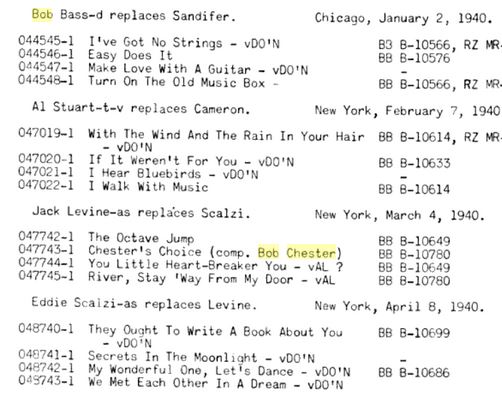
——————————-
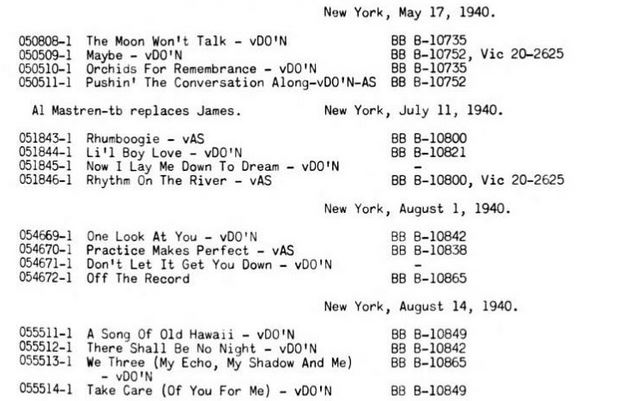
——————————-
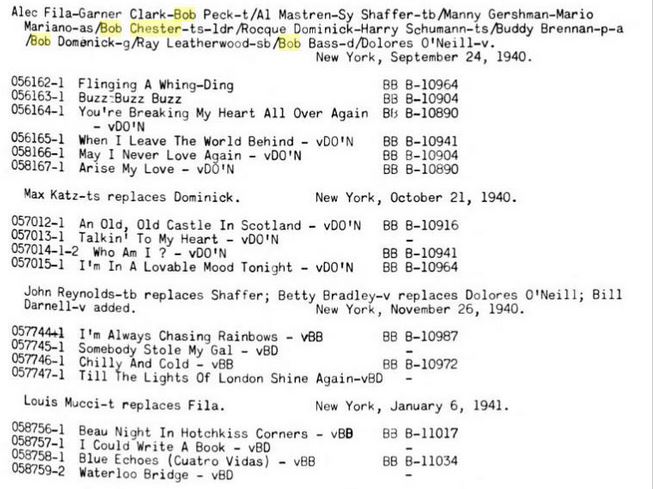
——————————-
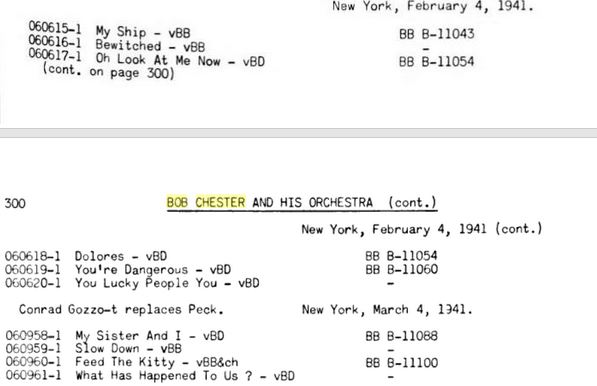
——————————-
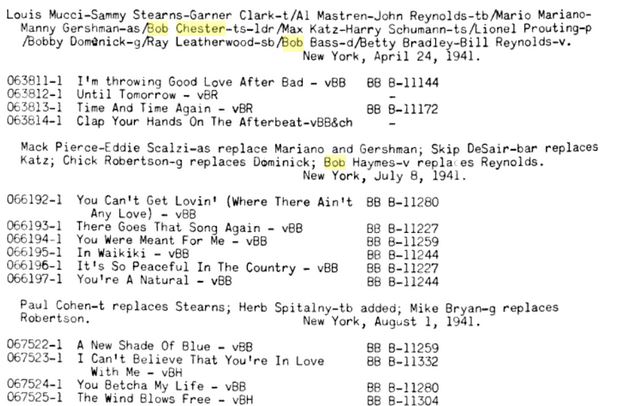
——————————-
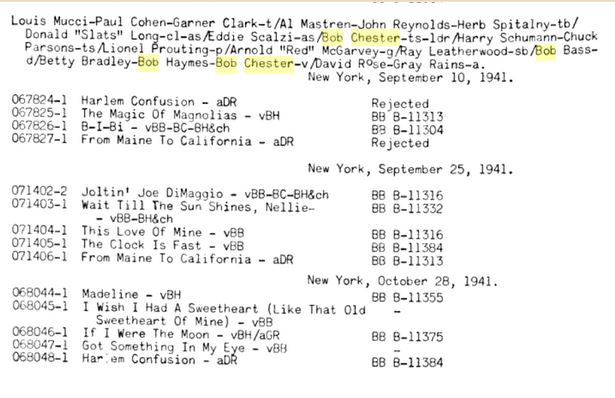
——————————-

——————————-
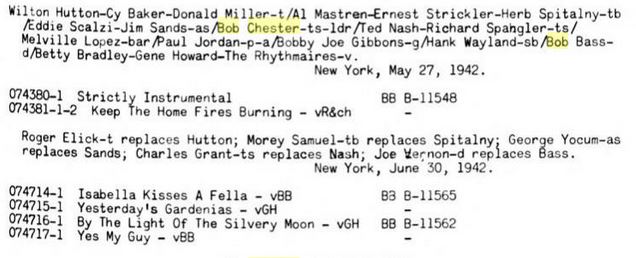
This is a fairly significant output for an orchestra that we barely know. For my money, this was a fantastic orchestra with some great recorded songs. Luckily some collectors of original 78rpm records have compiled and posted many of Bob Chester’s early recordings. You can see the list and listen to the recordings here: https://archive.org/search.php?query=creator%3A%22Bob+Chester+and+his+Orchestra%22. Choosing from the extensive selection is difficult so I’m going to offer up a few different recordings. Here’s their first recording, “Just For A Thrill”:
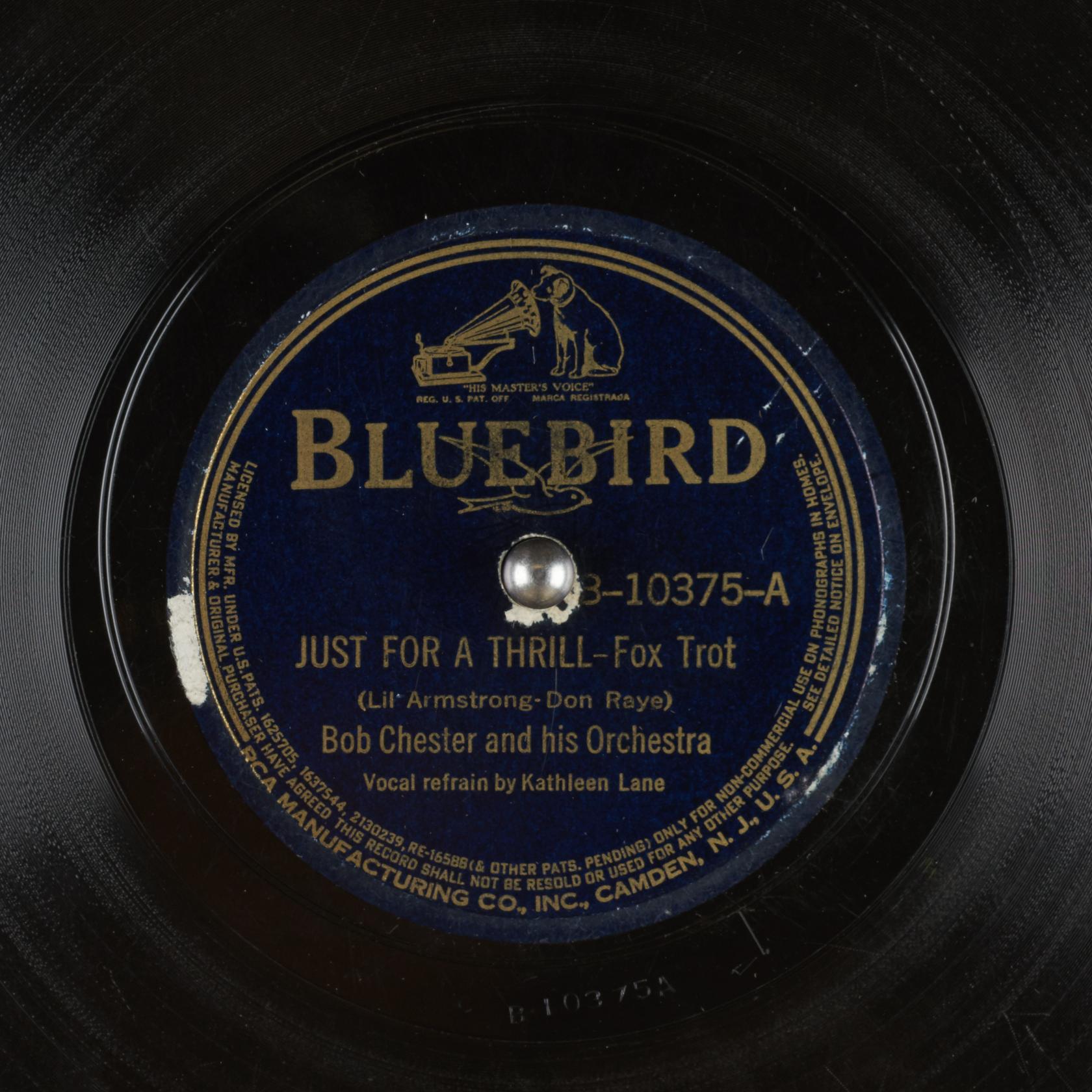
Next up is their only national hit, “With the Wind and the Rain in Your Hair.” This time someone has posted the recording on Youtube:
Now for one from their middle years, “The Moon Won’t Talk:”
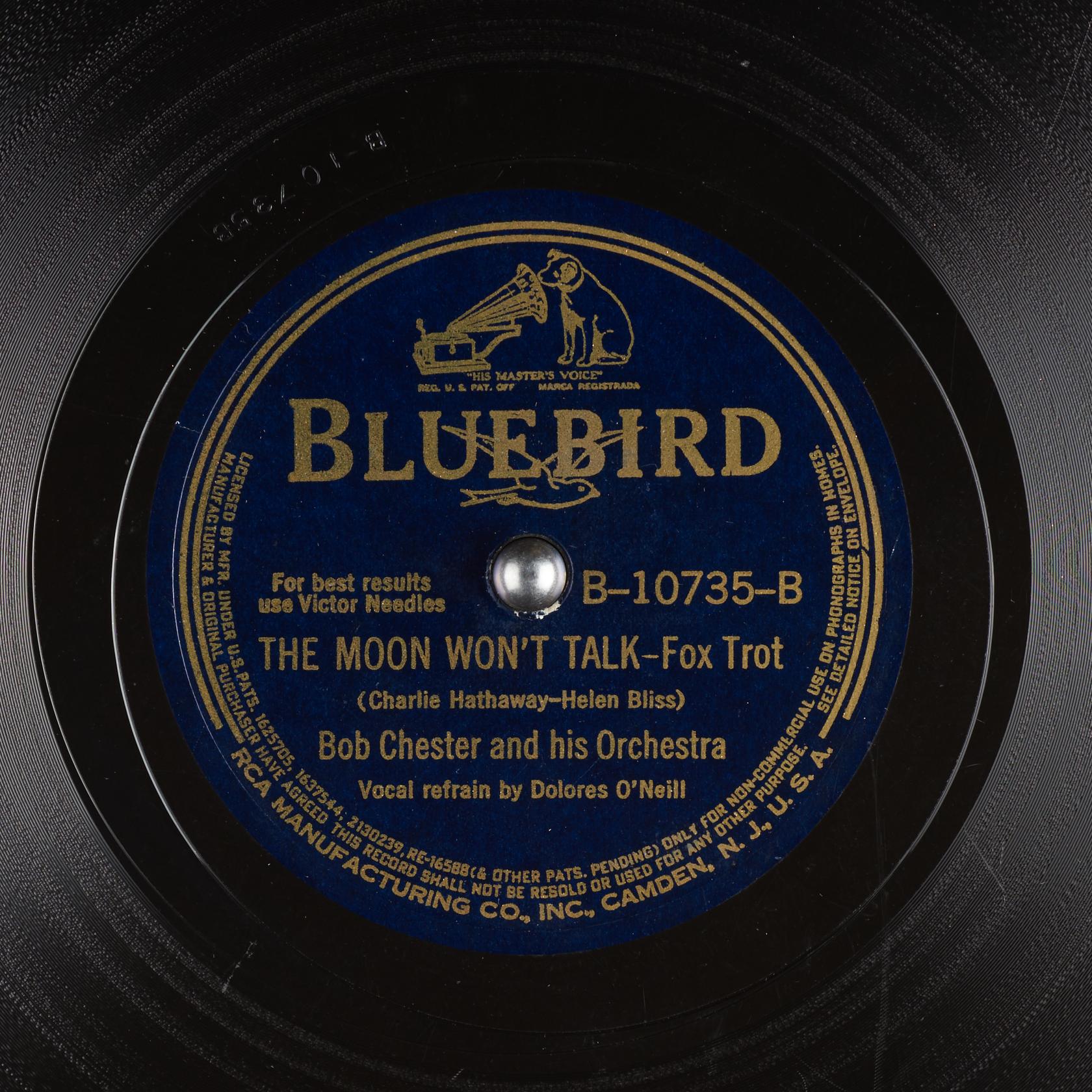
Here are two tracks from their last listed session of June 30, 1942, “By The Light Of The Silvery Moon” and “He’s My Guy.” Note that “He’s My Guy” is listed in the discography as “Yes My Guy” but “He’s My Guy” was the flip-side of “By The Light Of The Silvery Moon” from the same session.
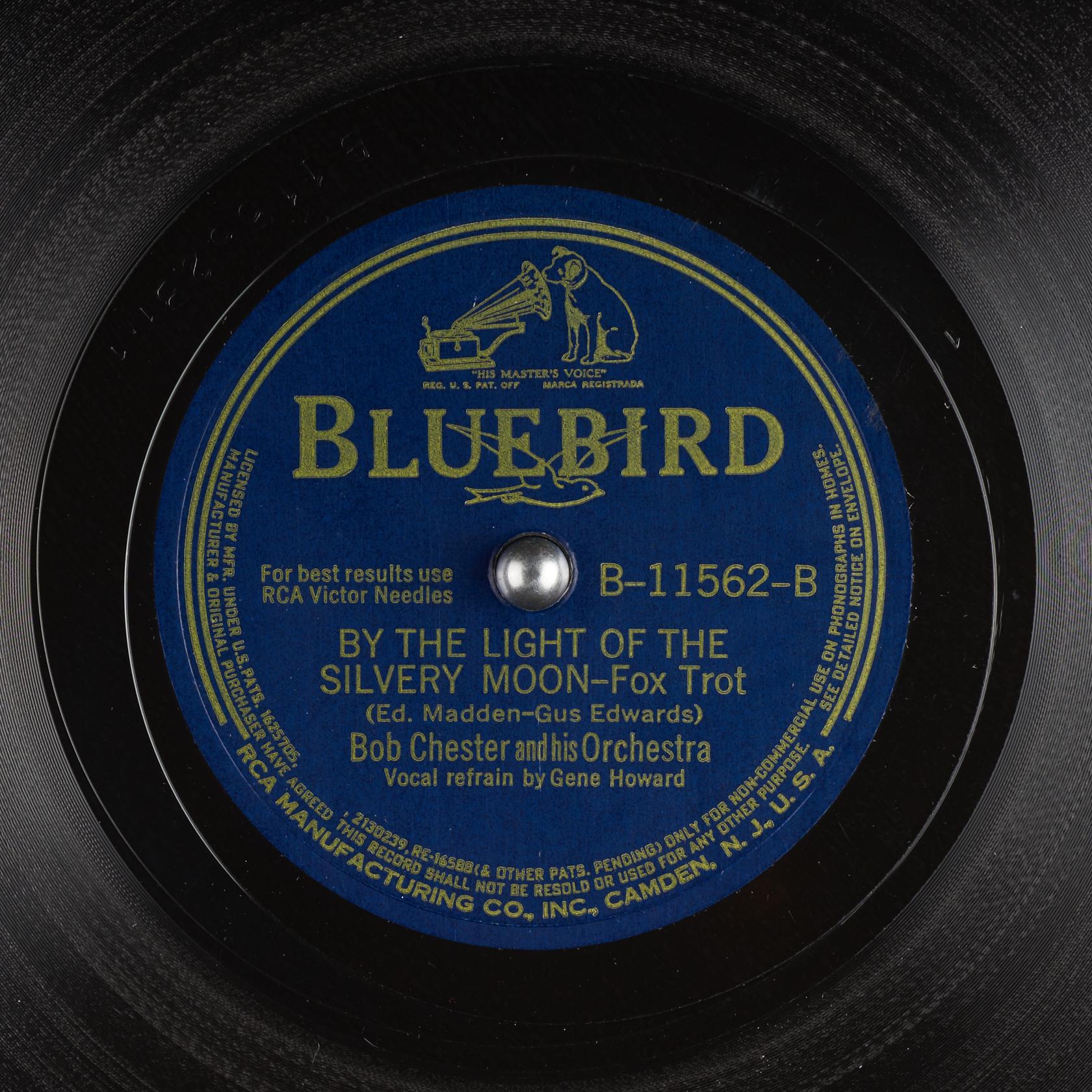
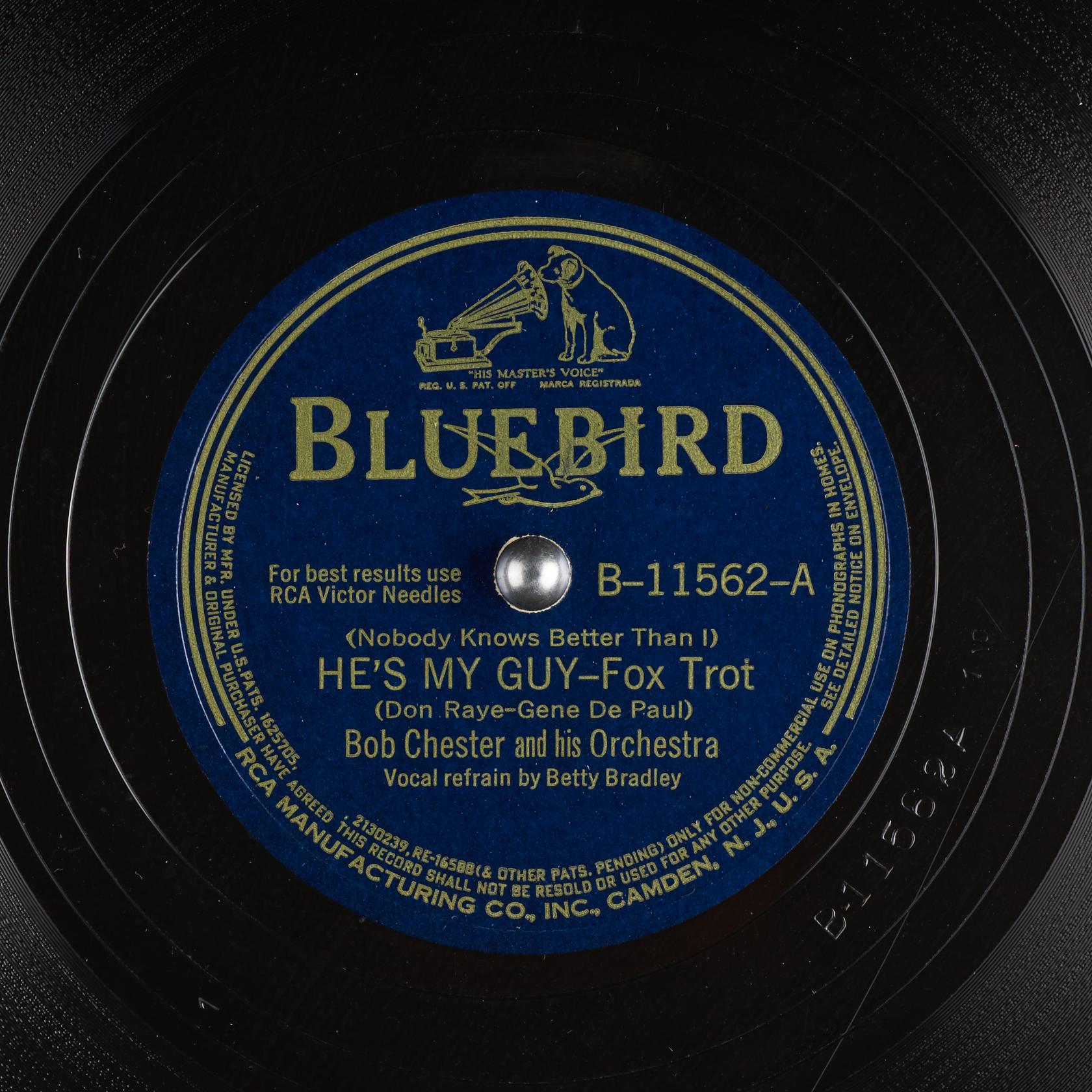
The discography that I posted above stops at 1942 but from the Wikipedia article we know that “The orchestra disbanded in the mid-1940s…Chester assembled another band for a short time in the early 1950s.” We are lucky that some of the 1950 recordings were also posted on Archive.org. Here’s “Frenzy” and the flip side of that 78, “Mad About Love.” Both songs were recorded in March of 1950.


Before I finish with Bob Chester, I want to post some other exciting material by this band. In one of my Linda Keene blahgs, I wrote about the Soundies she did with Henry Levine and his band. In case you haven’t read that yet, here’s my explanation about Soundies:
“Soundies are three-minute American musical films, produced between 1940 and 1947, each containing a song, dance, and/or band or orchestral number. Produced professionally on 35mm black-and-white film, like theatrical motion pictures, they were printed in the more portable and economical 16mm gauge.
The films were shown in a coin-operated “movie jukebox” called the Panoram, manufactured by the Mills Novelty Company of Chicago. Each Panoram housed a 16mm RCA film projector, with eight Soundies films threaded in an endless-loop arrangement. A system of mirrors flashed the image from the lower half of the cabinet onto a front-facing screen in the top half. Each film cost 10 cents to play, and there was no choice of song; the patron saw whatever film was next in the queue. Panorams could be found in public amusement centers, nightclubs, taverns, restaurants, and factory lounges, and the films were changed weekly. The completed Soundies were generally made available within a few weeks of their filming, by the Soundies Distributing Corporation of America.”
We are lucky that Bob Chester and His Orchestra filmed some Soundies. We are also lucky that someone has posted these on Youtube. The first is Bob Chester and the band performing “B-I-BI” which they recorded for Bluebird on September 10, 1941:
The second is a compilation of songs by Bob Chester and his Orchestra, “Octave Jump”, “On The Sunny Side of the Street”, “Deep River”, and “Chesterwoogie.” The orchestra recorded “Octave Jump” on March 4, 1940 but I don’t know if they recorded the other three songs.
Finally, I want to jump back to something else that was referenced in the Wikipedia article:
Chester’s group, billed “The New Sensation of the Nation,” had its own radio show on CBS briefly in the fall of 1939. The twenty-five-minute program aired from the Hotel Van Cleve in Dayton, Ohio late on Thursday nights (actually 12:30 am Friday morning, Eastern Time); the September 21, 1939 edition can be heard on the famous One Day In Radio tapes, archived by Washington D.C. station WJSV.
The reference here is to the “One Day In Radio” which was broadcast by the WJSV radio station. Here’s another Wikipedia explanation:
On September 21, 1939 radio station WJSV in Washington, D.C. made an audio recording of its entire 19-hour broadcast day. This undertaking was a collaboration between the station and the National Archives,
Bob Chester and his Orchestra were part of the schedule and a twenty-five minute program of their music was included in the “One Day In Radio” recordings. The entire 19 hours is also available on Archive.org at https://archive.org/details/001WakeUpMusic. Here’s the entire Bob Chester program as broadcast on September 21, 1939:
Moving on, the next major outfit that was associated with Florence Suttle was George Duffy and His Orchestra. Florence Suttle would tour with Duffy from April to December of 1935. Duffy and his band seemed to be a big deal in Ohio in the mid-1930s. Look at this article below from The Cincinnati Enquirer (Cincinnati, Ohio), June 21, 1935 announcing the opening that evening of the George Duffy Orchestra at the Gibson Roof Garden:
It was a a fairly significant advertisement announcing George Duffy and His Orchestra. But what happened to George Duffy? It should be noted that there was also an Irish Show Band, the George Duffy Orchestra in the 1940s but it’s not the same organization. I could find very little about the American Duffy and his Orchestra. There is a website/blog dedicated to Duffy at http://georgeduffyandhisorchestra.blogspot.com/ with some wonderful photos but no real information. Here’s one of the photos of George Duffy and his Orchestra:
Unfortunately there are no other details about the photo or even a date for the image. I could not find a discography for George Duffy and His Orchestra but did find some sheet music images of songs that had been attributed to Duffy:
I could find nothing to suggest that George Duffy even recorded these songs. I scanned through old newspapers and found that Duffy continued to front an orchestra and was busy making public appearances from the mid-1930s to as late as the early 1960s. In fact, Duffy was still performing as late as 1962 as can be attested by this advertisement from the Cleveland Plain Dealer, August 3, 1962:
George Duffy passed away on March 29th, 1963:
As I have said, I cannot find a discography for George Duffy and His Orchestra but it is possible that the band made at least one recording. I have found images for a 78 rpm record on the Quaker label for George Duffy and His Orchestra. The record features the songs “Love Is Just Around The Corner” backed with “The Ice Cream Song”
Unfortunately I could not find any music files to offer of George Duffy and His Orchestra. I know they also performed a number of live radio remotes but I haven’t come across any of these either. George Duffy and His Orchestra did perform at the Cleveland Auto Show in November of 1935. The Cleveland Automobile Show ran for a week from November 23rd to November 30, 1935 and one of the big attractions was the appearance of George Burns and Gracie Allen in a stage show. Burns and Allen did broadcast from the Cleveland Automobile Show but I haven’t found a radio transcription of the show so I do not know if Duffy made an appearance on the Burns and Allen show.
The next band I wanted to explore was an Orchestra that Florence Suttle appeared with in January of 1936. The following advertisement is from the Cleveland Plain Dealer on January 25, 1936:
The name of the Orchestra is referred to as Pinkey Hunter and his Orchestra. This is another Orchestra that seemed to have roots in Ohio but again very little is known about them. In searching for a discography for Pinkey Hunter and his Orchestra, I could only find reference to Pinkey Hunter as a member of Emerson Gill and His Castle of Paris Orchestra. The following discography section notes Pinkey Hunter as a member of Gill’s Orchestra and that Hunter performed vocals on some of the recordings.
The last credited song for Pinkey Hunter with Gill’s Orchestra was “Ready For The River” from March 27th, 1928. This song is also available on Archive.org.
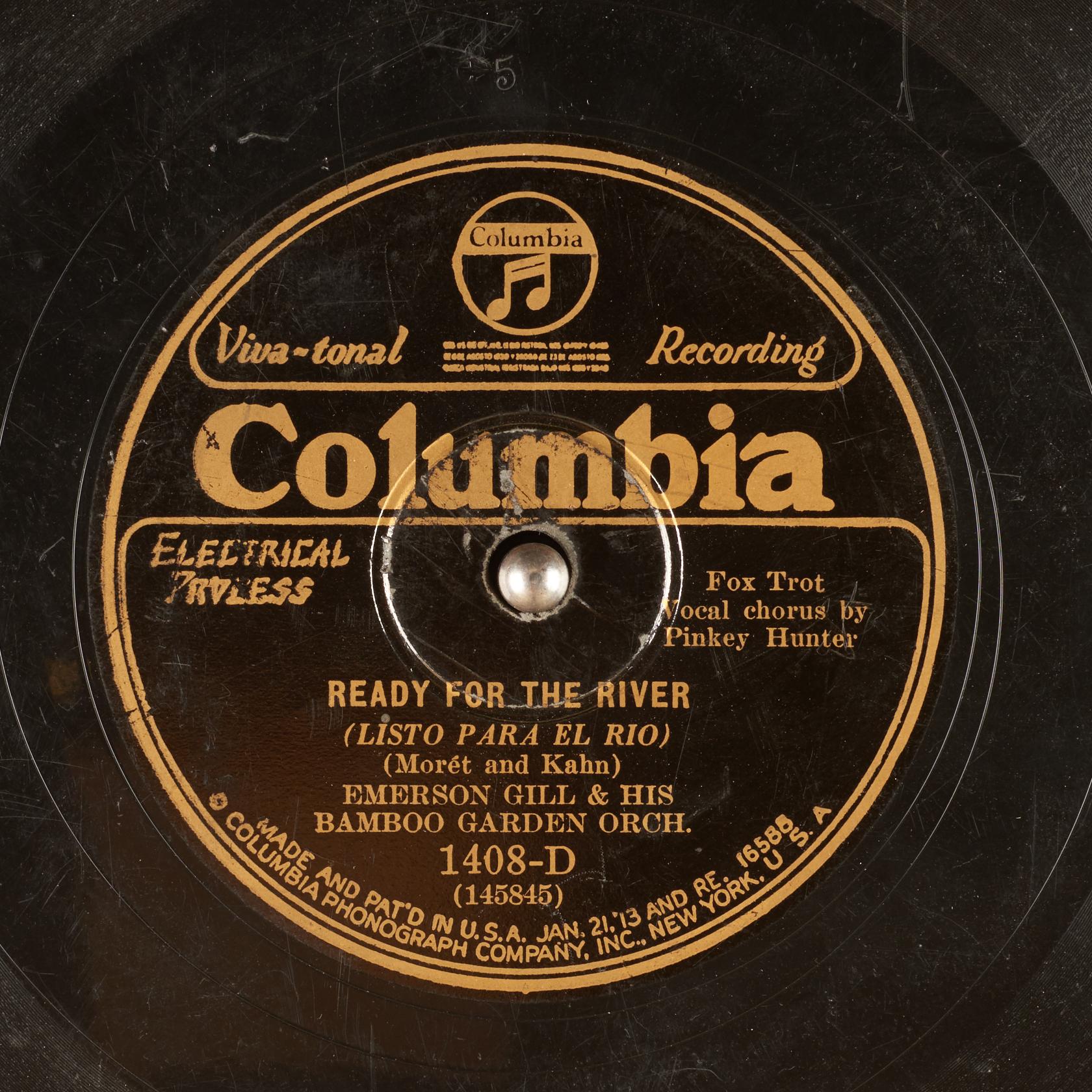
From the same March 27, 1928 session that produced “Ready For The River”, we have Emerson Gill & His Bamboo Garden Orchestra with “That’s What I Call Keen” with Pinkey Hunter doing vocal:
Someone has posted on Youtube the first Emerson Gill track that credits Pinkey Hunter on vocal. It’s “That’s My Girl ” from the February 17th, 1925 session.
Youtube also brings us two tracks from Emerson Gill’s March 1st, 1926 session that also have Pinkey Hunter vocals. They are “My Bundle of Love” and “The Roses Brought Me You”:
I could find no recordings for Pinkey Hunter and his Orchestra or any information that suggests that Pinkey Hunter recorded with his own Orchestra. One of the last news articles that I could find about Pinkey Hunter was from the Cleveland Plain Dealer, March 13, 1949 that shows an elderly Hunter:
In 1949 Pinkey Hunter was the program director at WHK in Cleveland, Ohio. I could not find an obituary for him.
Skipping ahead to 1936, we find the next reference to Florence Suttle was that she was appearing at the Mayfair Room of the Book-Cadillac Hotel in Detroit beginning on April 17th, 1936. This time she was with the Sam Jack Kaufman Orchestra. I’ll work backwards in that I found Sam Jack Kaufman’s obituary from the February 11th, 1990 Washington Post:
MUSICIAN S.J. KAUFMAN DIES AT 88
Sam Jack Kaufman, 88, president of the D.C. Federation of Musicians Local 161-710 from 1955 until he retired in 1985, died of cancer Feb. 7 at his home at Leisure World in Silver Spring.
Mr. Kaufman was born in Rochester, N.Y. He was a musician and bandleader in New York, Chicago, Detroit and elsewhere before moving to the Washington area in 1940.
He was the conductor and then the music director at Loew’s Capitol Theater from the time he came here until 1954, when the Capitol discontinued its vaudeville programs. Mr. Kaufman became head of the musicians union the next year.
His wife, Helen Kaufman, died in 1985.
Survivors include two children, Carol Chappelear of Landover and Noel Kaufman of Burke; two grandchildren; and three great-grandchildren.
So, what we know of Sam Jack Kaufman was that he was a bandleader up to 1940. Here’s a picture of him:
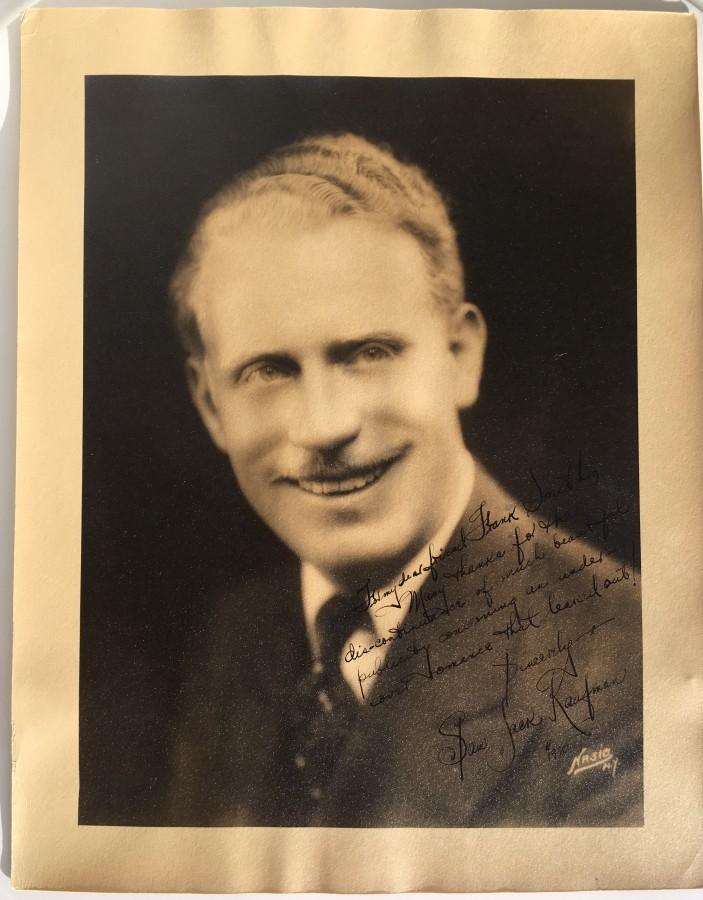
His obituary contains the most detailed information I could find on Sam Jack Kaufman. I could find no discography for the Sam Jack Kaufman Orchestra but Archive.org did offer up a 78 rpm of “Washington” sung by Jimmie Dodd and backed by Sam Jack Kauman and his Capitol Theater Orchestra.
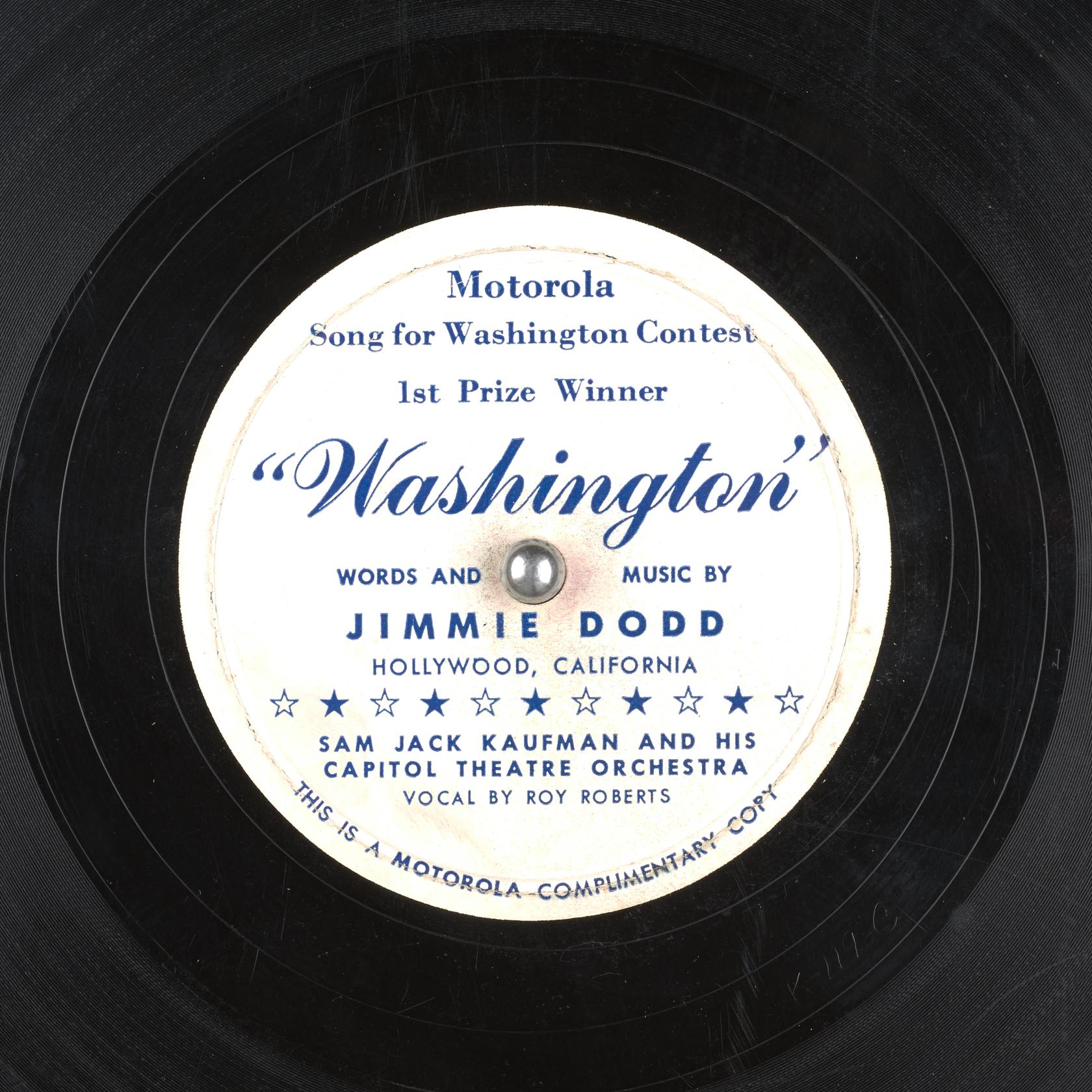
Seeing as the band is billed as “Sam Jack Kaufman and his Capitol Theater Orchestra,” this recording would have to been made after 1940 when Kaufman relocated to Washington. Of course we should also take note of the fact that the song is the “Motorola Song for Washington Contest 1st Prize Winner.” There may be some earlier recordings of Sam Jack Kaufman because I did find the following 78 of “My Confession” backed with “My Love For You”:
I could not find any other information about these recordings nor when they were issued.
The last forgotten band that I want to look at associated with Florence Suttle is Coleman Sachs and his Orchestra. After Florence finished with Sam Jack Kaufman in the Mayfair Room in Detroit, she was next spotted in Birmingham, Alabama on May 22, 1936 at the Club Rex on the same bill with “Coleman Sachs and his 14-Star Band.”
Like Pinkey Hunter, most of the recordings I could find of Coleman Sachs were with another orchestra. In this case it was the Jack Linx Orchestra. There is a website of sorts, https://www.angelfire.com/ga/benningcobbrussel/coleman_sachs_orchestra.html, dedicated to the Coleman Sachs Orchestra but, like the one dedicated to George Duffy, it consists mainly of photos and old articles. This is another case of working backwards. Two of the articles were from later in life when he was retired from the music business. If the images are not very clear then click on them to open a larger and clearer image. The first apparently comes from 1956 because it has a handwritten notation of that year:
So, the big thing we learn is that the orchestra disbanded in 1944 and may not have got around to making any recordings. The second article doesn’t have a date but it references Coleman Sachs as being 74 years old. He died in 1985 at the age of 79 so this next article was either 1979 or 1980:
The only way we get to hear Coleman Sachs play is by listening to early recordings of Jack Linx and his Society Serenaders. This was the band that Sachs took over in 1930 and by 1932 he had hung up his trumpet to concentrate on leading the band. Before I get to the Jack Linx recordings, I want to post some pictures of Coleman Sachs and his Ochestra and one of the Jack Linx orchestra. These come from the website I mentioned earlier dedicated to Coleman Sachs. First, here’s Sachs and his band:
There is no date for that picture but it’s probably early 1930s. Here’s Jack Linx and his Society Serenaders (again no date):
I’ve been able to put together a small discography of Jack Linx recordings. I do not know if this is complete:
The very first recording listed is “How Come You Do Me Like You Do?” from August 28th, 1924 and we are lucky that is available to hear:

Someone has posted on YouTube, the other two tracks from that first session, “It Ain’t Gonna Rain No Mo” & “Doodle Doo Doo””:
A year later in August of 1925, Jack Linx recorded “She’s My Sheba, I’m Her Sheik”:
And finally two songs from the March 13th, 1926 session, “Tie Me To Your Apron Strings” and “Fallen Arches” :
Somewhere in these almost 100 year old tracks is the long gone trumpet of Coleman Sachs. I may not have found any recordings for Coleman Sachs and His Orchestra but the Jack Linx Society Serenaders is essentially the same group of musicians but with Coleman Sachs on trumpet and Jack Linx conducting.
Our story as it relates to bands associated with Florence Suttle ends and then begins anew with a very small notice in the Birmingham News on December 4th, 1937.  The article relates to Frank Suttle, her then husband, but there is a mention that his wife “Flo, is singing with Nye Mayhew’s Band in Boston under the name of
The article relates to Frank Suttle, her then husband, but there is a mention that his wife “Flo, is singing with Nye Mayhew’s Band in Boston under the name of  Linda Keene.” Florence Suttle had finally made the transition to Linda Keene. The next few forgotten bands all came to my attention because of Linda Keene. To be accurate, Linda Keene had been appearing with Nye Mayhew since September 30th of 1937. The article to the left from The Boston Globe (Boston, Massachusetts), September 25th, 1937 states “Nye Mayhew and his orchestra will open at the Hotel Statler, Thursday evening,” which would make the opening on September 30th, 1937.
Linda Keene.” Florence Suttle had finally made the transition to Linda Keene. The next few forgotten bands all came to my attention because of Linda Keene. To be accurate, Linda Keene had been appearing with Nye Mayhew since September 30th of 1937. The article to the left from The Boston Globe (Boston, Massachusetts), September 25th, 1937 states “Nye Mayhew and his orchestra will open at the Hotel Statler, Thursday evening,” which would make the opening on September 30th, 1937.
I wish someone had created a website dedicated to Nye Mayhew. The little that I could find in the way of a biography comes from old newspaper articles and from this excerpt from “”American Big Bands” by William F. Lee:
I know the excerpt is short on details but I found an interview that Mayhew gave in 1956 about his early career and association with Bix Beiderbecke. The article comes from the January 5th, 1956 edition of the Dallas Morning News.
We can piece together from this article and the excerpt from “American Big Bands” that Nye Mayhew started out with Paul Whiteman. In fact I found references of Nye Mayhew recording with the following bands:
–Hale Byers and His Orchestra February 25, 1926
–Paul Whiteman 1927
–Hoagy Carmichael and His Pals October 28, 1927
–Fred Rich and His Hotel Astor Orchestra, May 4, 1928
–The Dorsey Brothers’ Concert Orchestra July 16, 1928
–Carolina Club Orchestra March 27, 1929
Nye Mayhew’s Orchestra has a discography that starts on July 27th, 1933 as Nye Mayhew and his Westchester Biltmore Orchestra:
Note that the September 7th, 1933 session that produced “Thanks” and “The Day You Came Along” were issued under Will Osbourne and His Orchestra but supposedly Osbourne was only the vocalist with the accompaniment actually being Nye Mayhew’s Orchestra. Also, the January 19th, 1934 session produced recordings by Mayhew being issued under another Orchestra’s name.
For this blahg, I’m not going to offer recordings that Mayhew did with earlier orchestras. I want to stick to the above discography because quite a number of his recordings are available on Archive.org and YouTube. Someone has posted to Archive.org thirteen selections of Mayhew’s 78rpm output, https://archive.org/details/NyeMayhewOrchestra78rpmCollection. Mayhew had a nice sound in the 1930s. From the first listed session, July 27, 1933, here are “Blue Roses” and “It Isn’t Fair”:
Blue Roses:
It Isn’t Fair:
From the September 7, 1933 session here are the two recordings that were actually Nye Mayhew and His Orchestra issued as Will Osborne and His Orchestra. Here are “Thanks” and “The Day You Came Along”:
And finally, from the last session on April 9, 1934 here are “This Is Our Last Night Together” with a vocal by Douglas Newman and “Baby, Take A Bow!” which has a Russ Morgan vocal:
Nye Mayhew was still fronting an Orchestra under his name into the late 1950s. I do not know if Mayhew made any other recordings after his April 9th, 1934 session. There were some radio remotes of his Orchestra over the years which might have included Linda Keene as well but I have not come across any remotes by Mayhew. I could not find an obituary for Mayhew but I found references to him leading an orchestra well into the late 1950s.
I’m skipping ahead a little bit with Linda Keene’s association with big bands. In 1938 she had a short stint with Glenn Miller’s Orchestra and then Bobby Hackett’s Dixieland Orchestra. Seeing as these are relatively known bands, I want to stick to the forgotten orchestras that had some association with Linda Keene. Just before Christmas in 1938 Linda Keene landed in Bermuda for a stint at the Silver Grill, in the Hotel Bermudiana. The band she was appearing with was Scott Fisher and His Orchestra.
Here’s another band for which there is very little information. I had to really search for any information on Scott Fisher and His Orchestra. The following information comes from the website https://jazzagemusic.blogspot.com/2020_06_15_archive.html:
1905
‘Bud’ Fisher, Leader
aka: “Scott Fisher and his Orch.”
b. New York, NY, USA
York, NY, USA.d. August 2, 1972, Flemington, NJ, USAWinfield Scott (“Bud”) Fisher was born in the Bronx, New York on June 16, 1905. He moved to Bogota, Bergen County, New Jersey at age 13. He and younger brother William Hardy “Billy” Fisher, known in 1923 as “The Musical Fishers,” made one of their earliest appearances at “The Sphinx Club” in New York’s Waldorf Astoria Hotel on the same bill with the legendary Will Rogers. Scott was only 17, while Billy was just 9.
Using a foundation of himself on piano and kid brother Billy on sax and clarinet (and later handling orchestrations), Scott organized his first band as a teenager. Eventually, they became known in the New York/New Jersey area as “Bud Fisher & His Commodores.”
Into the early 1930s, Scott’s orchestra became known throughout New York and New Jersey, playing numerous dates on area radio stations like WABC, WEAF, WAAT, WJZ, and WADA. Scott, Billy, and company also performed at New Jersey’s legendary “Rustic Cabin” for two years, among their numerous other club appearances. “Bud Fisher & His Commodores” were regulars on Cunard Line cruise ships, performing on runs to Cuba and Bermuda, and were winter mainstays at Bermuda’s “Bermudiana Hotel.” The band also recorded several commercial pressings, and performed at the famous Coconut Grove Room at New York’s Park Central Hotel.
Around 1935, the band went on several two-month tours, only to return to the New York area without a gig. As a result, the orchestra split up. Had they been able to survive that period, the Fisher band may well have become one of the top names in the business as the movement of individual band members shortly after the breakup illustrates:
Harold Mooney, the piano player, went on to arrange for Hal Kemp; Gordon Griffin found a place for his horn with Benny Goodman; “Toots” Camarata became Jimmy Dorsey’s arranger; the third trumpet player (name unknown) joined up with Casa Loma; while Billy Fisher became sax/clarinet man and arranger for Russ Morgan. (Billy later filled a similar role for Al Donahue, before becoming Ray Bloch’s “right-hand man” for roughly 35 years, the bandleader for whom he arranged the music of “The Ed Sullivan Show” for all 24 seasons.)
Scott Fisher later became Head Copiest for Ray Bloch. He also worked in this capacity for numerous Broadway shows including “How to Succeed in Business Without Really Trying,” “Golden Boy,” “The Apple Tree,” “My Fair Lady,” and “The Music Man,” mostly under the direction of Elliot Lawrence. He died on August 2, 1972 in Flemington, New Jersey at age 67. Billy Fisher died in Greenwich, Connecticut on April 24, 1972.
I was able to find a small discography for the 1935 Scott Fisher and His Orchestra:
I apologize for the image above but it was presented that way at the source although I was able to enhance the January 10, 1935 session. A handful of the Scott Fisher and His Orchestra recordings are available on Archive.org at https://archive.org/search.php?query=creator%3A%22Scott+Fisher+and+his+Orchestra%22. What is noteworthy about the Archive.org available recordings is that some are from the 1935 sessions and there are later ones from 1949. I cannot find a discography for Scott Fisher in 1949 but we can assume this is the same Scott Fisher from 1935 but probably fronting a new orchestra.
First up is “Tiny Little Finger Prints” which is the first song from the January 7th, 1935 session. The vocal is by Durella Alexander. This is not available from the Archive.org source so I’m presenting it myself after having downloaded it from https://soundcloud.com/peter-mintun/tiny-little-fingerprints-scott-fisher-his-orchestra-with-durelle-alexander-1935

Now, I’ll offer the remaining tracks from the January 10, 1935 session. Here we have “In A Blue And Pensive Mood”, “Just A Fair-Weather Friend”, and “Haunting Me”. The vocals on the three songs are all performed by Lee Johnson. These tracks also come from the Soundcloud.com source.
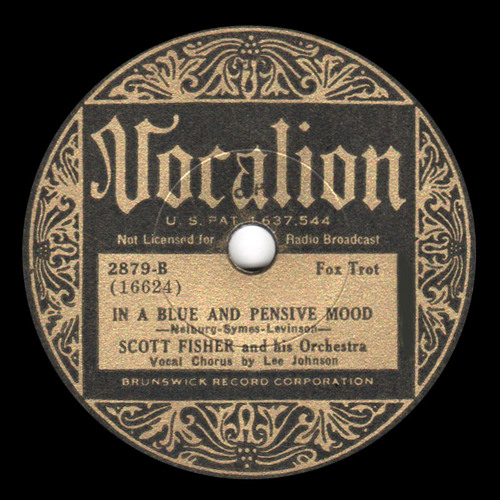
————————————-
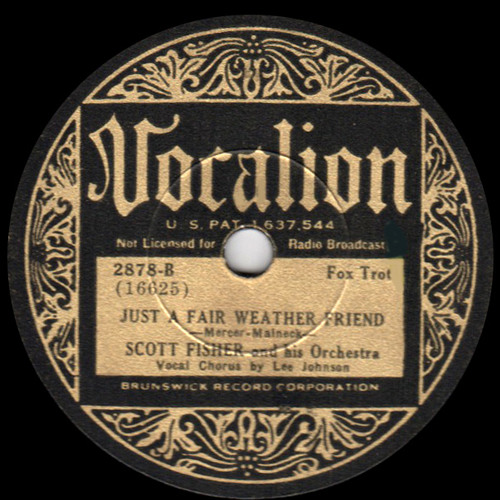
————————————-
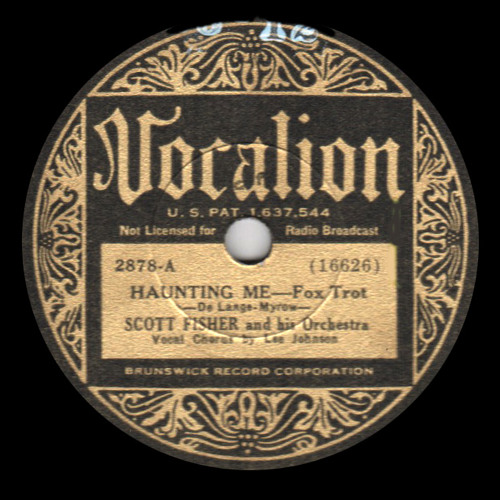
The remaining tracks from 1935, being the April 4th session, are all available at https://archive.org/search.php?query=creator%3A%22Scott+Fisher+and+his+Orchestra%22. Here are the first and last track from that session, “Don’t Worry Sweetheart” and “I’m In Love All Over Again.” Lee Johnson is back with the vocal.
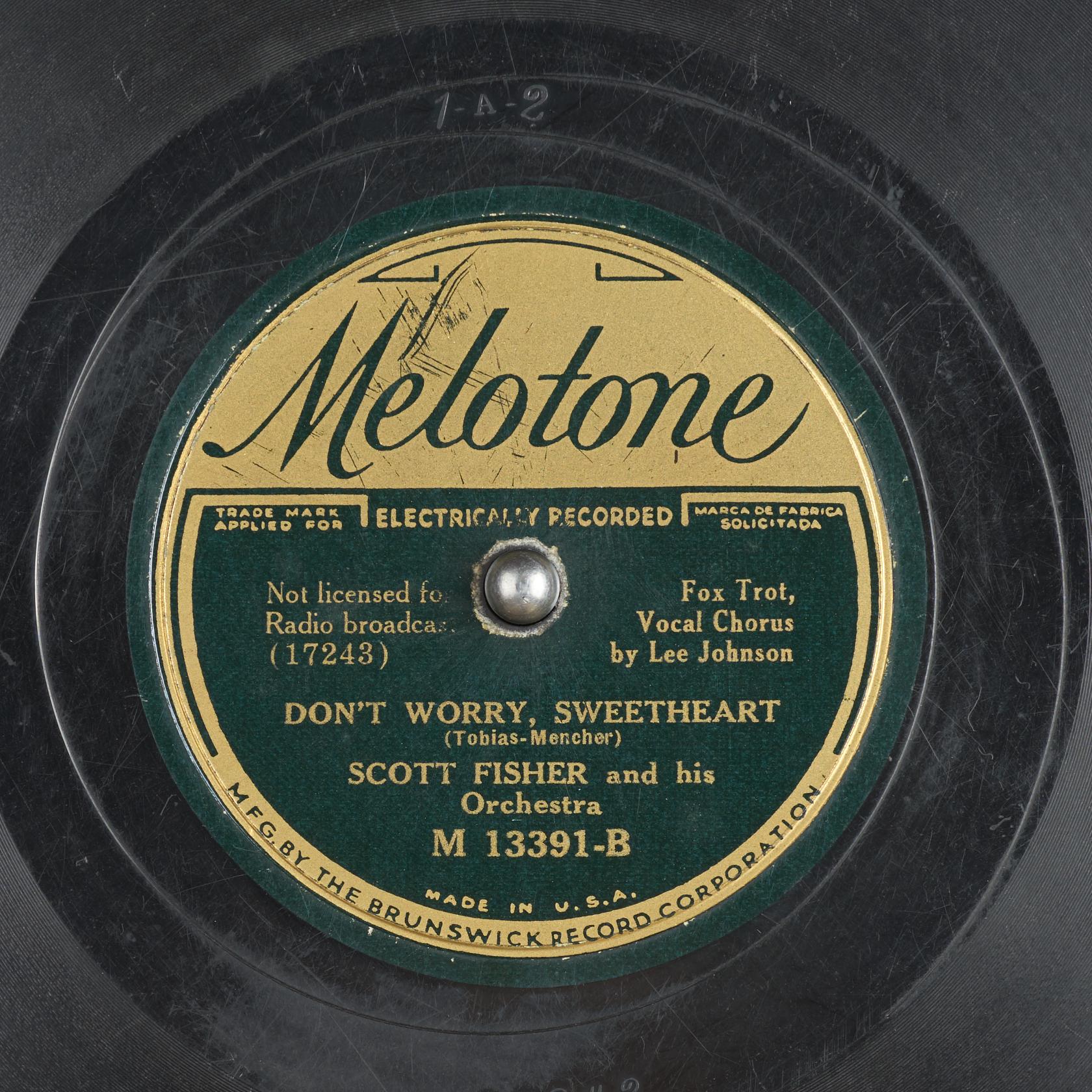
————————————-
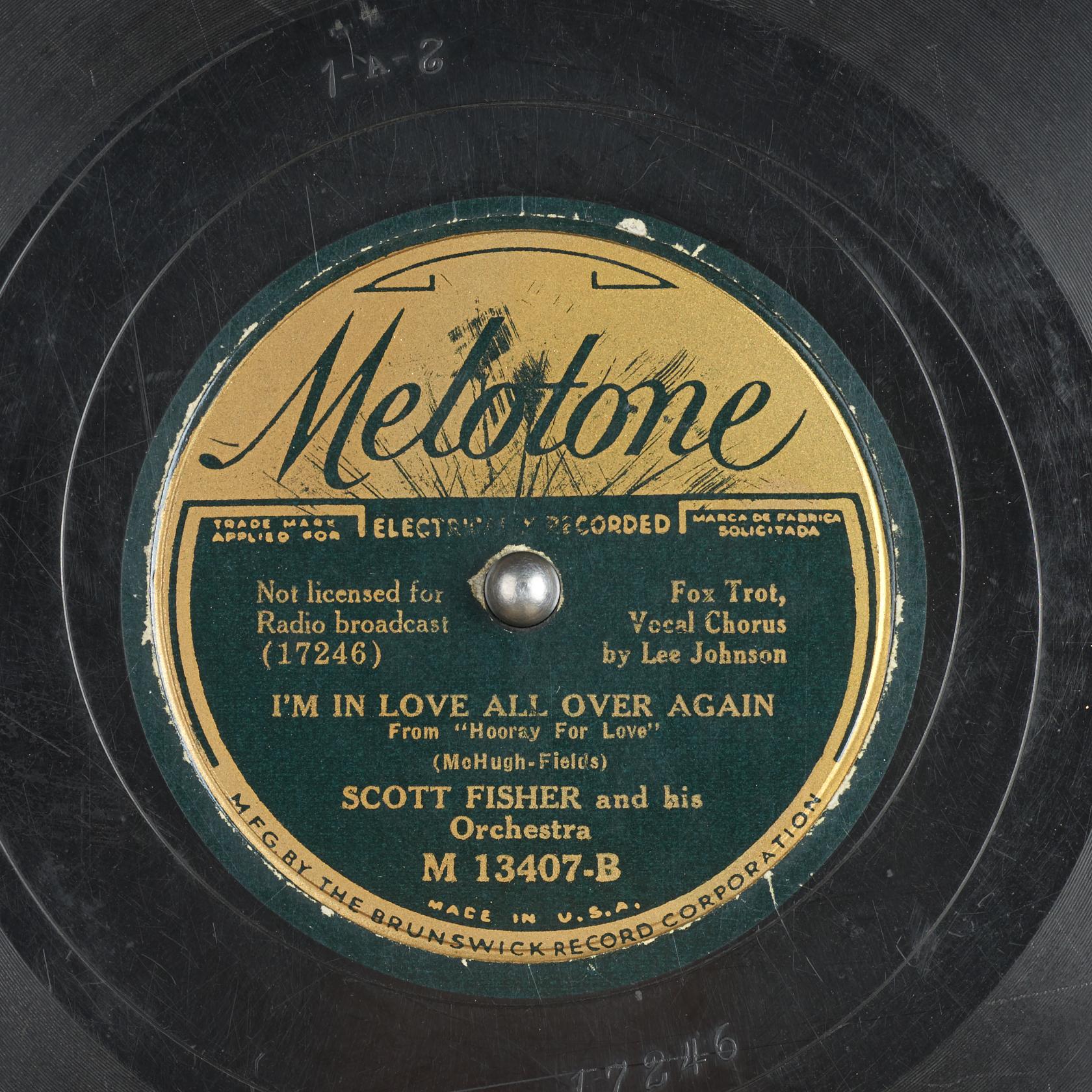
The 1949 tracks of Scott Fisher and His Orchestra are also available on Archive.org. Of course, by 1949 the sound of the Scott Fisher Orchestra is quite different.

————————————-
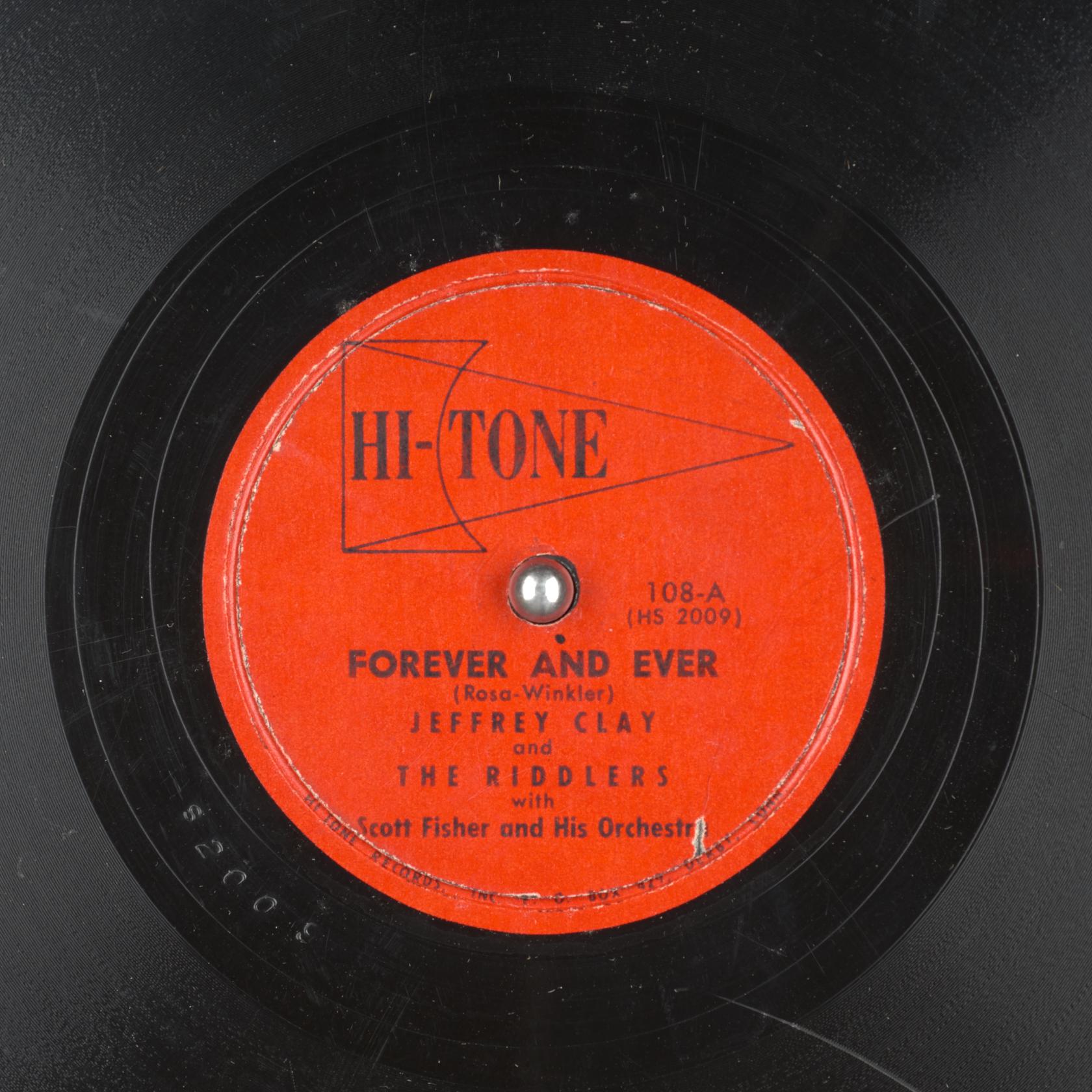
————————————-
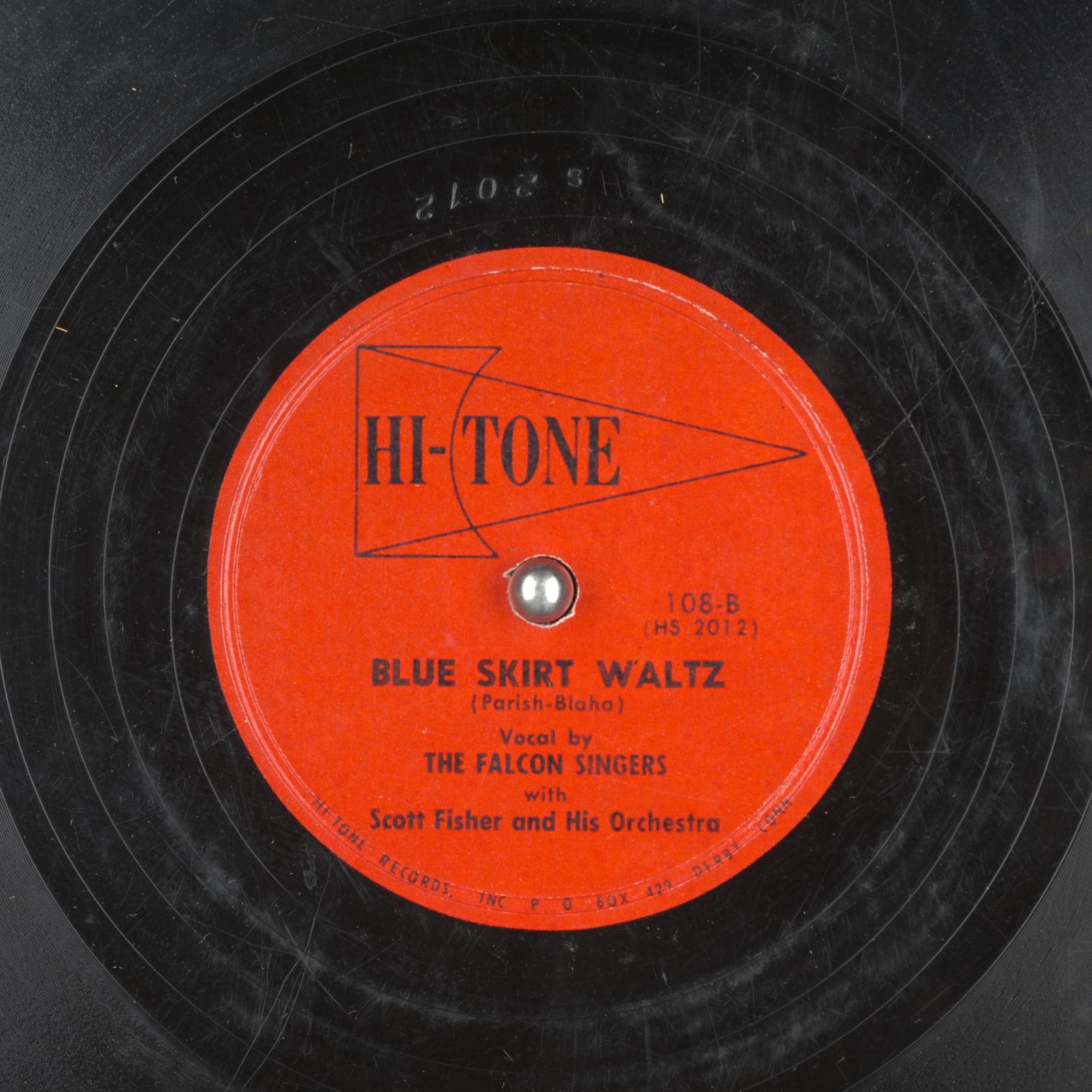
Again, I have no proof that the 1949 Scott Fisher and His Orchestra is the same as the 1935 band. Here’s another mystery to add to the Scott Fisher Orchestra from the later years. Betty Clooney, sister of Rosemary Clooney, apparently recorded the song “In the Cool, Cool, Cool of the Evening” with Scott Fisher and His Orchestra, also for the Hi-Tone label in 1953
:format(jpeg):mode_rgb():quality(90)/discogs-images/R-13094630-1547958520-2668.jpeg.jpg)
Unfortunately I was not able to find a source from which to download or listen to this track.
Here is Scott Fisher’s obituary from August 2nd, 1972:
After leaving Scott Fisher and His Orchestra in Bermuda, Linda Keene returned to America to do some recordings and touring with Jack Teagarden and His Orchestra. Teagarden and his band are famous enough that I don’t need to include them here. Linda Keene was with Teagarden from May to July 1939 but by August she had moved on to touring with Willie Farmer and His Orchestra.
Like some of the other bands detailed in this blahg, I had never heard of Willie Farmer and His Orchestra until I started researching Linda Keene. I will again start with the obituary to try and provide some information about Willie Farmer. This is from the April 7th, 1990 edition of The Morning Call out of Lehigh Valley and Allentown, Pennsylvania
WILLIAM FARMER, 84; HAD 65-YEAR MUSICAL CAREER
THE MORNING CALL
William “Willie” Farmer, 84, formerly of 1622 Liberty St., Allentown, a musician for more than 65 years, died Thursday at the Leader Nursing and Rehabilitation Center, Bethlehem. He was the husband of Hilda (Solomon) Farmer. They observed their 60th wedding anniversary last October.
Farmer began his career at the age of 13 as a drummer with the Carl Fenton Orchestra. He later played with many of the big bands, including Glen Gray and the Casa Luma Band, Red Nichols and Tommy Dorsey. In 1932 he took over the Larry Siry Band at the Simplon Club, New York City, and the band was known thereafter as Willie Farmer and the Farmer-in-the-Dell Orchestra.
Born in New York City, he was a son of the late Abraham and Celia (Dorsky) Farberman.
During the 1930s, Farmer’s orchestra toured throughout the East and Midwest and made more than 30 recordings, mainly for the Bluebird/Victor label. The band was well-known in New York night spots, including The El Murrocco, Tavern-on-the Green and Rainbow Room at Rockefeller Center.
They also played locally at the former Castle Gardens at Dorney Park, the former Mealey’s Auditorium, Allentown, and Flagstaff, Jim Thorpe. The band also performed for many early radio broadcasts of the era.
Farmer moved to Florida in 1975 and continued to work as a musician until retiring in 1985.
He was a past board member of Associated Musicians Local 802.
Survivors: Wife; son, Dr. H. Stephen of Princeton, N.J.; daughter Judith, wife of Morton Miller of Allentown, five grandchildren and two great-grandchildren.
Graveside services: 2 p.m. Sunday, Beth Israel Cemetery, U.S. 1, Woodbridge, N.J. Arrangements, David J. Boyko Funeral Home, Macungie.
The takeaway information from the obituary is that Farmer’s orchestra “made more than 30 recordings” and that “the band also performed for many early radio broadcasts of the era.” Unfortunately I cannot find any live remotes for Willie Farmer and His Orchestra but from two different sources I was able to assemble the following discography:
I apologize again for some of the images for the 1937 and 1938 discography as they were cropped at the source. Note that in 1933 the Orchestra was known as Willie Farmer and His Simplon Club Orchestra. We are indebted again to people who have posted some of the 78 rpm records of Willie Farmer to Archive.org. You can listen to many of them through this link: https://archive.org/search.php?query=creator%3A%22Willie+Farmer+and+his+Orchestra%22. Willie Farmer and His Orchestra also had a nice sound on their recordings. None of the 1933 tracks are available on Archive.org so we will have to rely on YouTube. Here are two songs from that first session, “Love Is Love, Anywhere” and “Let’s Fall In Love”
Love Is Love, Anywhere
Let’s Fall In Love
From the Archive.org postings are two tracks from the June 11, 1937 session, “Stop! You’re Breaking My Heart” and “Scattin’ At The Kit-Kat”:
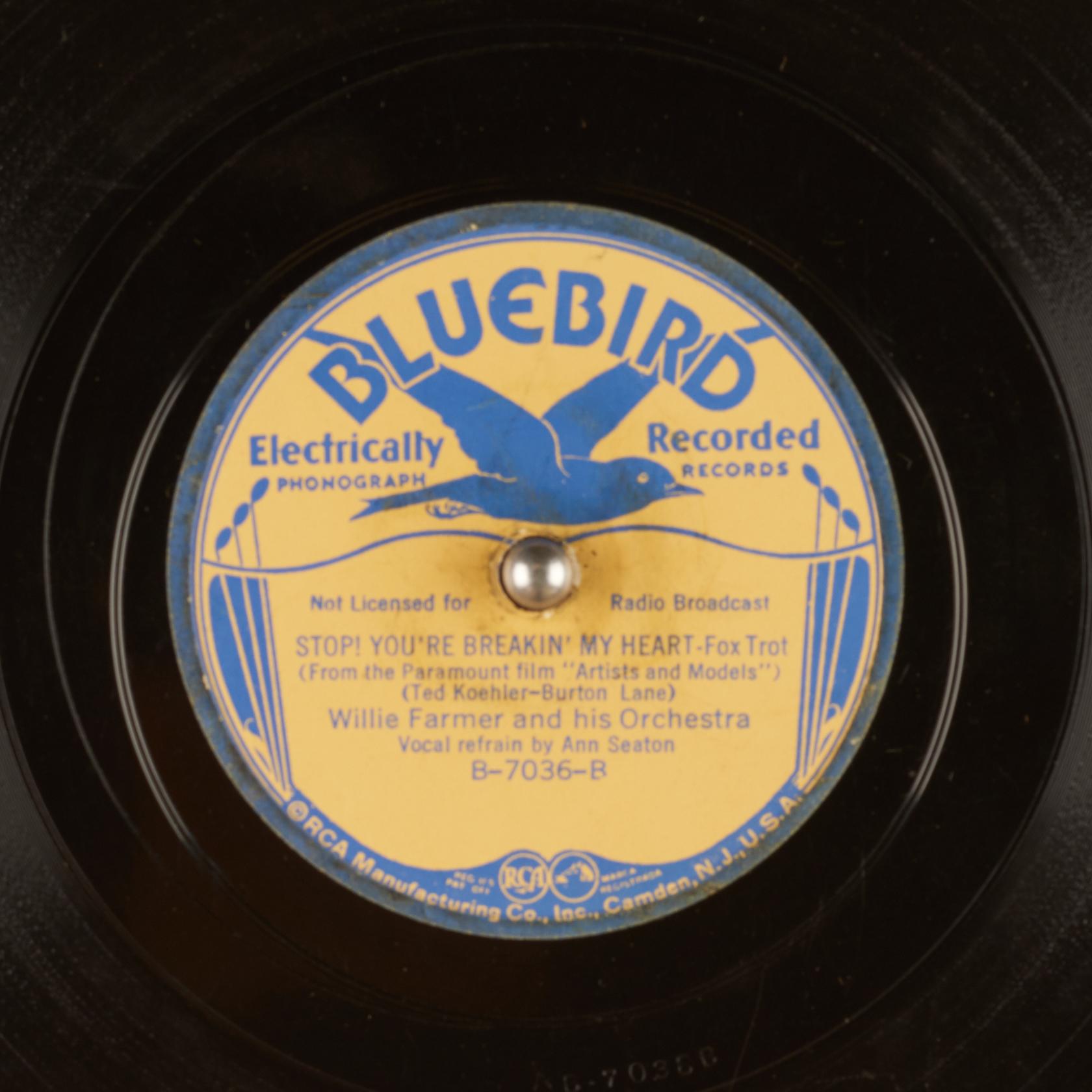
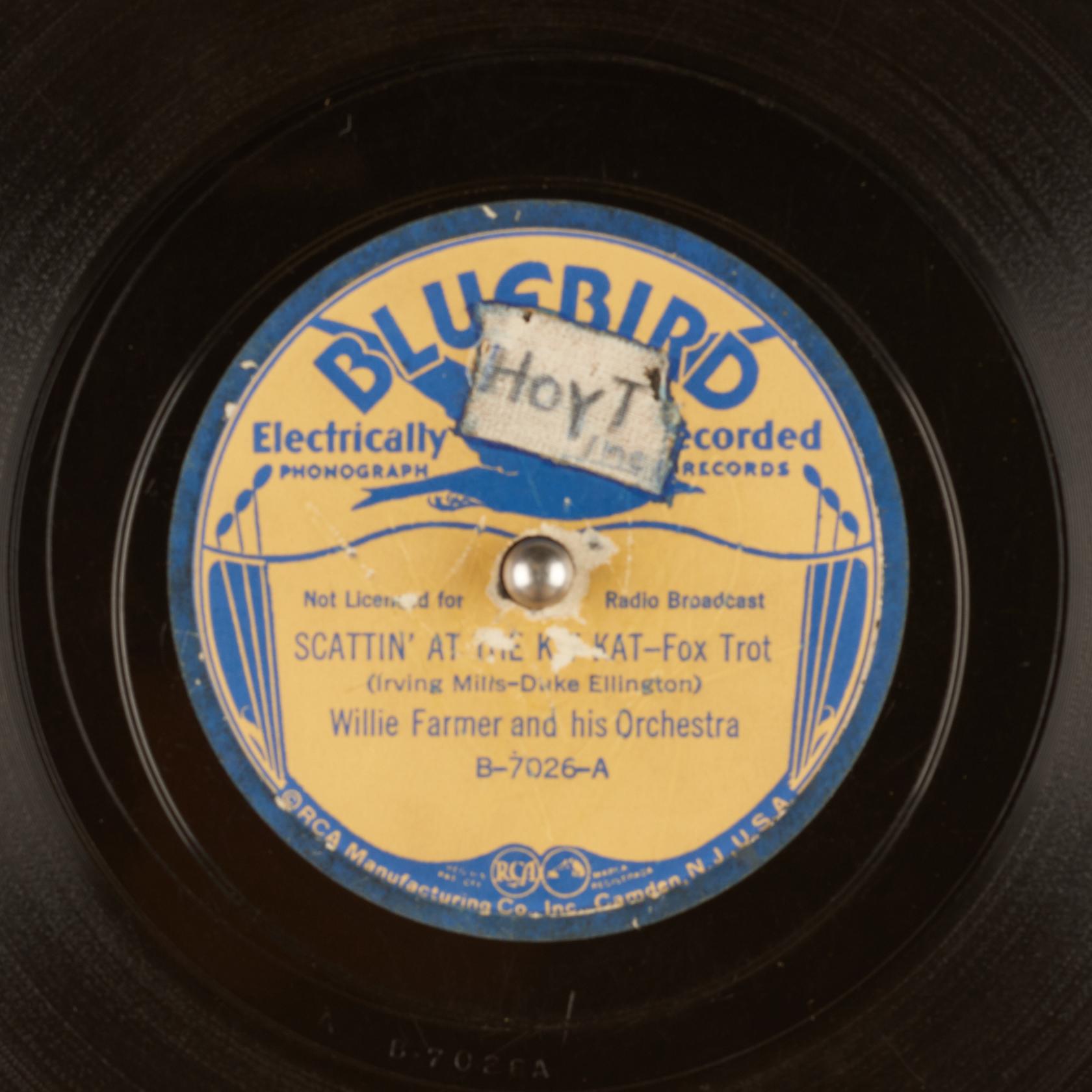
The following selections are simply because I like the titles. From September 9, 1937 comes “Midnight In The Madhouse” followed by “Tarzan” from July 15, 1938.
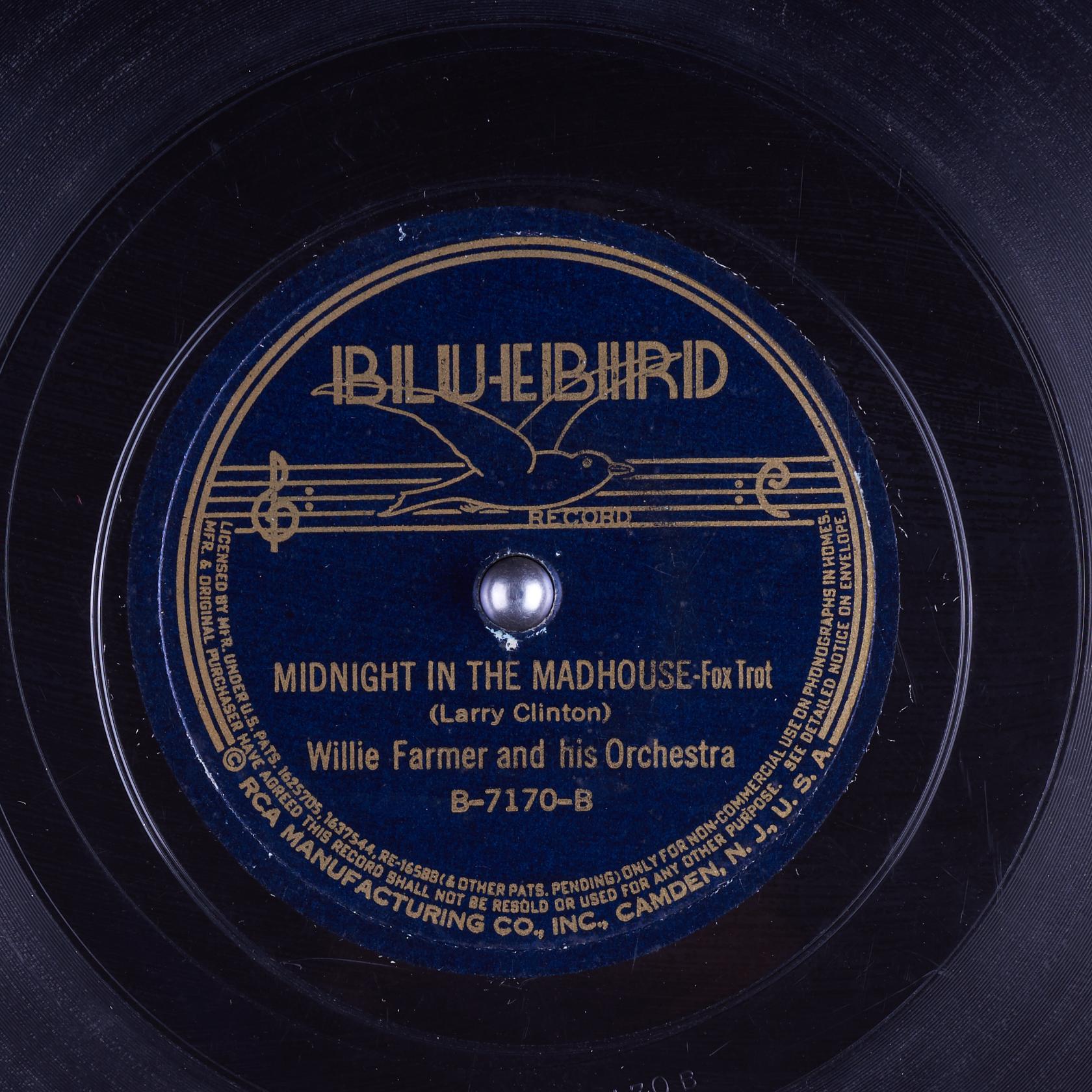
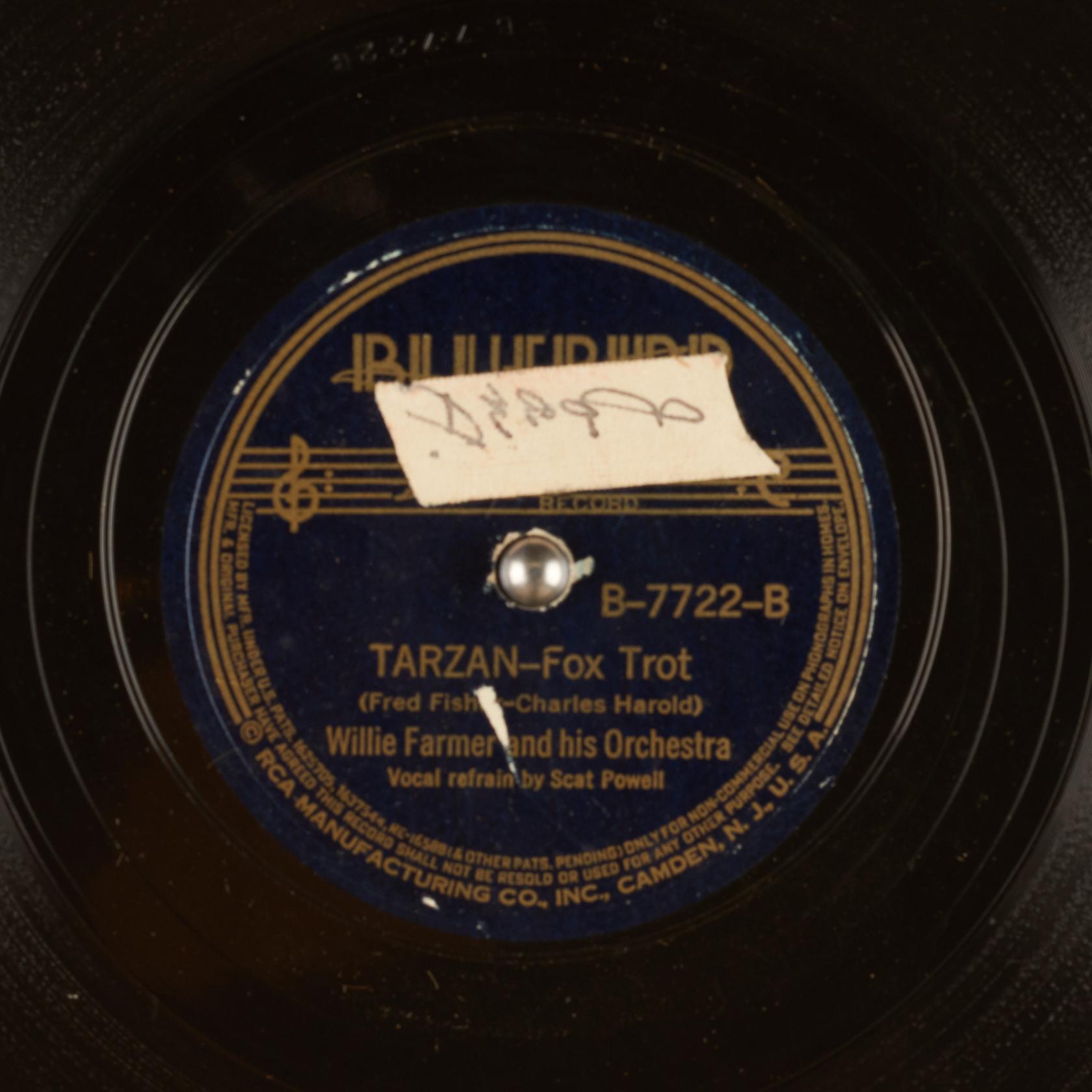
I’ll finish off with this band’s 1930s output by offering two tracks from their last session on September 1st, 1938. Here are “A Pretty Girl Milking Her Cow” and “Yes Ma’am I’m The Guy”:
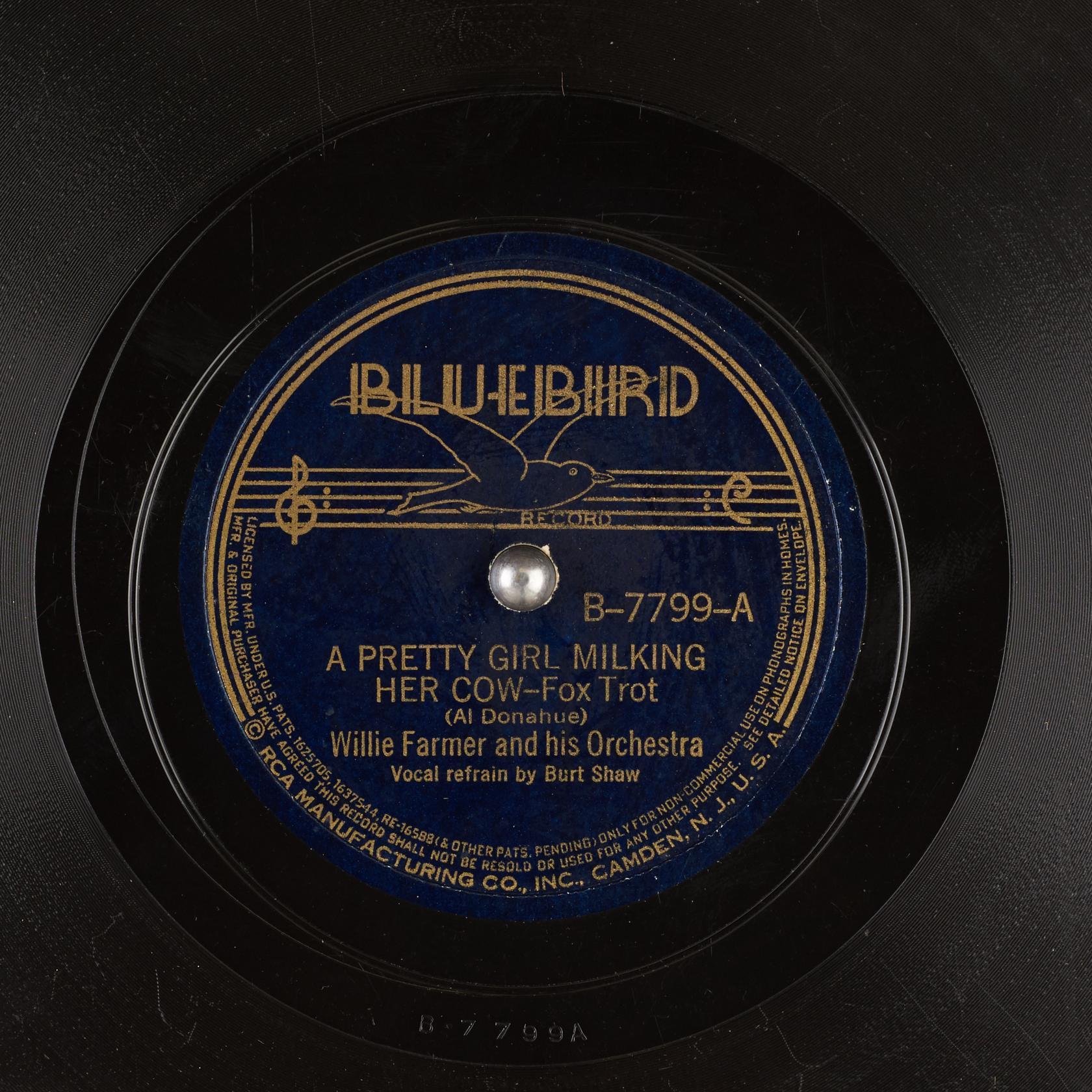
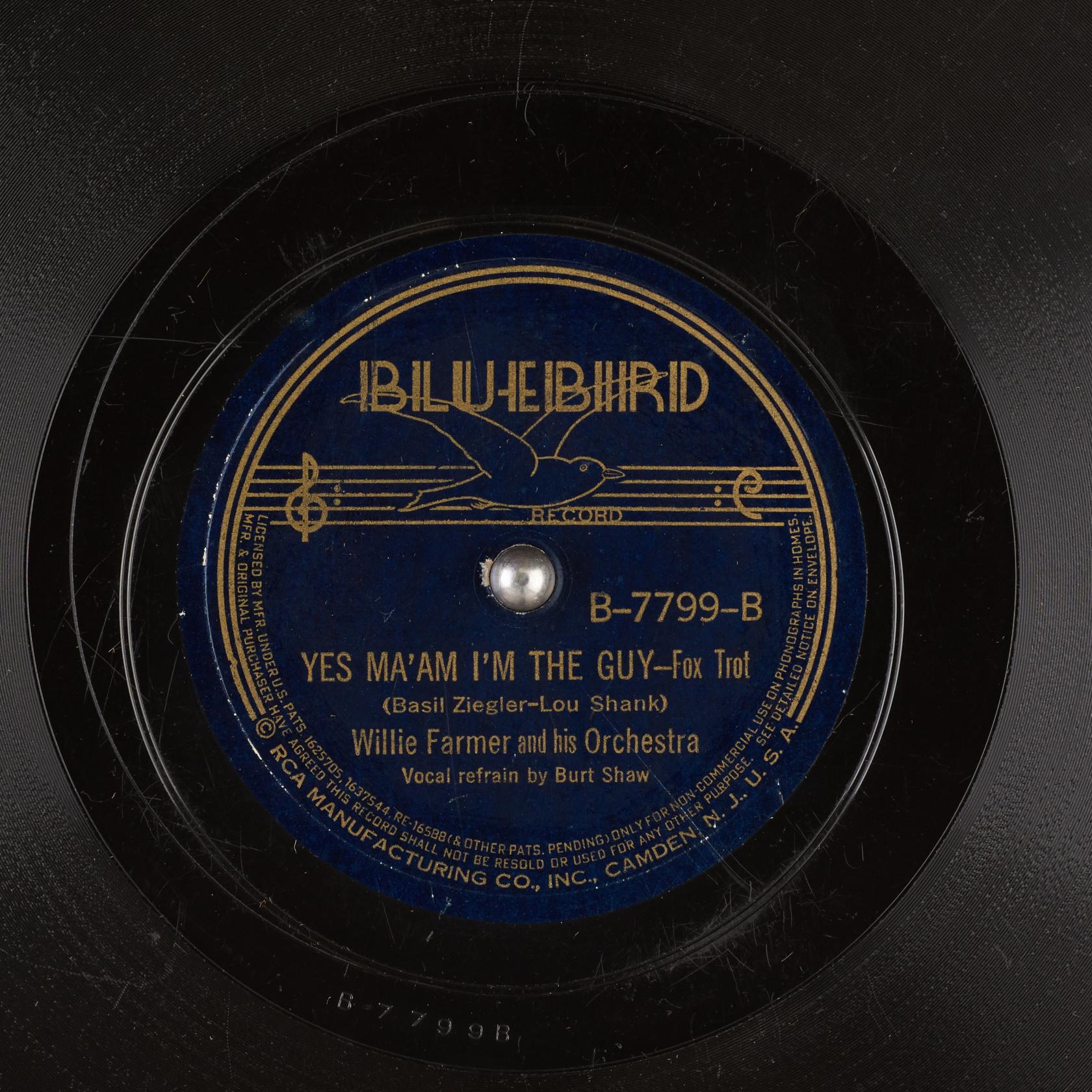
As with some other artists, like Scott Fisher, Willie Farmer appeared to have fronted another Orchestra in the 1940s. I have found listings for at least three songs that Willie Farmer and His Orchestra released on Jubilee in 1947, “I Found Gold”, “Louisa Learned The Roomba From Her Goomba”, and “Why Do They Fall In Fallsburg”. All three songs had vocals by Lee Tully. Luckily, someone has posted the last two songs on Archive.org:
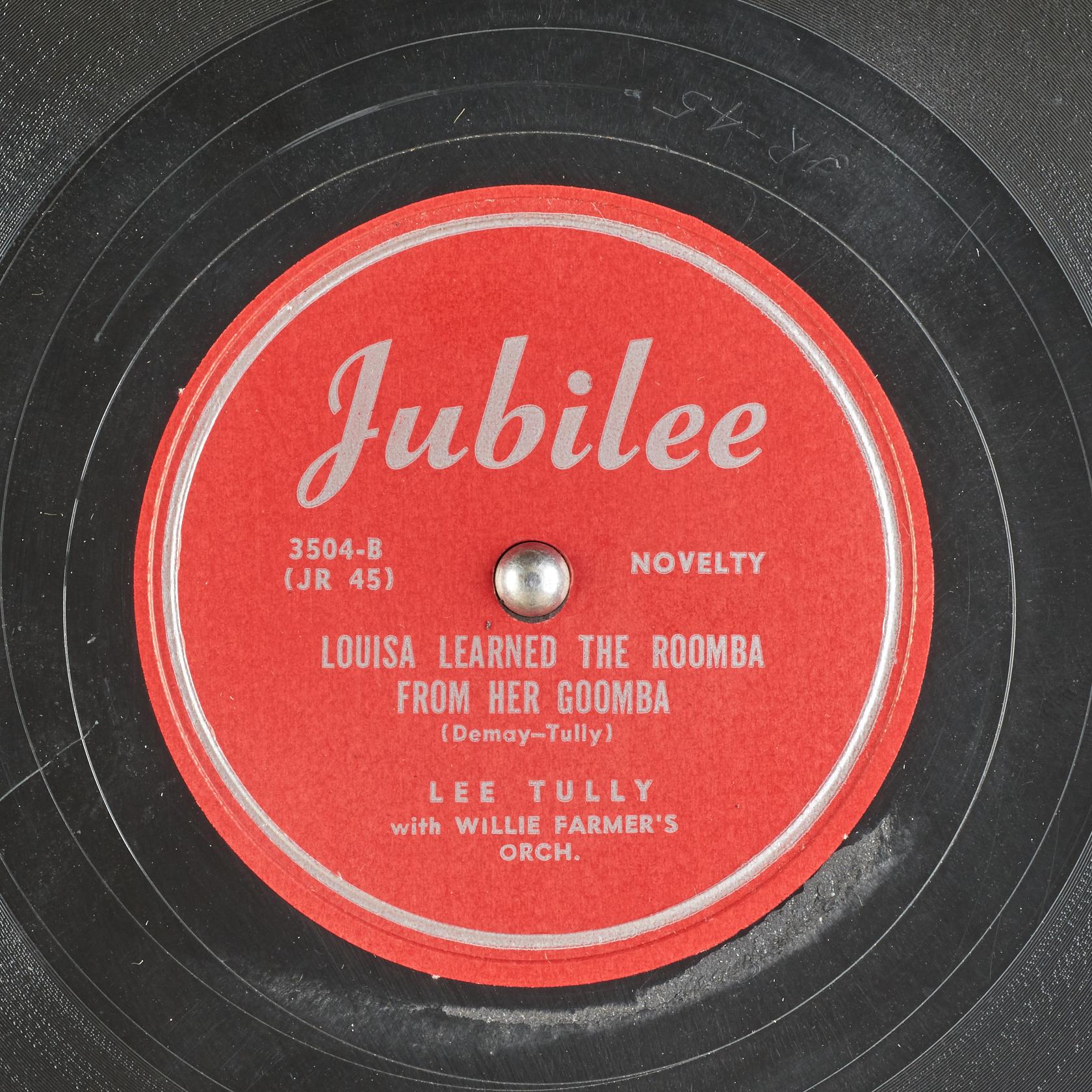

In 2016 a digital album of Willie Farmer and His Orchestra, “Perfect Jazz For Dancing” was released to digital platforms. None of the tracks match the 1930s discography so we have to assume these might have been from the late 1940s or later or quite possibly this is some other Willie Farmer and His Orchestra.
At last, we come to the final Forgotten Band for this blahg. After Willie Farmer and his Orchestra, Linda Keene was next spotted with Lennie Hayton and His Orchestra. At some point in November 1939, Linda took up with Lennie Hayton and his Orchestra and was appearing with him at Loew’s State theatre in New York starting November 24th. Billboard magazine reviewed Hayton at Loew’s State on November 24th and ran their review in the December 2, 1939 issue.
Now, I know some might say that Lennie Hayton is a very recognizable name. That is true. He has a good entry on Wikipedia at https://en.wikipedia.org/wiki/Lennie_Hayton. He started out with Paul Whiteman and His Orchestra and then joined the Charles Previn Orchestra for a time. Hayton in his history as a band leader recorded two numbers as a leader in 1928 and then led a big band that recorded from 1937-40. When the band broke up in 1940, Hayton settled in Hollywood, where he worked for MGM as an arranger, conductor and musical director. He married the singer Lena Horne in 1947 and thereafter served as her pianist, arranger and musical director. Between 1937 and 1940, the Hayton band, booked by Mills Artists Incorporated, toured coast-to-coast, playing one-nighters and extended stay locations with a lineup that ranged from 12 to as many as 20 musicians.
As mentioned, Lennie Hayton’s Orchestra recorded 24 tracks between 1937 and 1940. None of these tracks have been reissued on CD to my knowledge. It is that forgotten band that I want to focus on here. Here is the discography for the 1937-1940 Lennie Hayton and His Orchestra:
Many of Hayton’s recordings, include some later ones he did with Bing Crosby, are available for your listening pleasure on Archive.org at https://archive.org/search.php?query=creator%3A%22Lennie+Hayton+And+His+Orchestra%22. A complete list of his 78 rpm records can also be found, with some information at https://www.angelfire.com/music5/tony2003/html/lennie_hayton.htm Here’s the list from that website:
-
Carelessly (Chas. & Nick Kenny ‑ Norman Ellis). Vocal by Paul Barry. Decca 1248‑A (62144‑A). NY, 4/22/1937. E. Sid Stoneburn, clarinet solo. 3:10
-
It Looks Like Rain In Cherry Blossom Lane (Edgar Leslie‑Joe Burke). Vocal by Paul Barry. Decca 1248‑B (62145‑A). NY, 4/22/1937. E. 3:13
-
The Lady Who Couldn’t Be Kissed (from the Warner Bros. production “The Singing Marine”) (Harry Warren‑Al Dubin). Vocal by Paul Barry. Decca 1268‑B (62146‑A). NY, 4/22/1937.(Seems as if Hayton recorded practically the entire score of “The Singing Marine”, a musical that starred Kenny Baker. I’ve seen it on TCM). E+ 3:05
-
Night Over Shanghai (from the Warner Bros. production “The Singing Marine”) (Harry Warren‑Johnny Mercer). Vocal by Paul Barry. Decca 1268‑A (62147‑A). NY, 4/22/1937. E+. 3:19
-
I Know Now (from the Warner Bros. production “The Singing Marine”) (Harry Warren‑Al Dubin). Vocal by Paul Barry. Decca 1267‑A (62148‑A). NY, 4/22/1937. E+. 3:12
-
You Can’t Run Away From Love Tonight (from the Warner Bros. Production “The Singing Marine”) (Harry Warren‑Al Dubin). Vocal by Paul Barry. Decca 1267‑B (62149‑A). NY, 4/22/1937. E. 3:03
-
Gone With the Wind (Allie Wrubel‑Herb Magidson). Vocal by Paul Barry. Decca 1341‑A (62320‑A). NY, 7/1/1937. E. 3:05
-
What A Beautiful Beginning (from the 20th Century‑Fox production “Sing And Be Happy”) (Harry Akst‑Sidney Clare). Vocal by Paul Barry. Decca 1341‑B (62321‑A). NY, 7/1/1937. Looks rough, plays E (especially after restoration). 2:38
-
Can I Forget You (from the Paramount picture “High, Wide And Handsome”) (Jerome Kern- Oscar Hammerstein II). Vocal by Paul Barry. Decca 1348‑A (62324‑A). NY, 7/1/1937. N‑. 3:13
-
The Folks Who Live On the Hill (from the Paramount picture “High, Wide And Handsome”) (Jerome Kern‑Oscar Hammerstein II). Vocal by Paul Barry. Decca 1348‑B (62325‑B). NY, 7/1/1937. E+ to N‑. 3:05
-
That Old Feeling (from the Walter Wanger production “Vogues of 1938”) (Lew Brown‑Sammy Fain). Vocal by Paul Barry. Decca 1354‑A (62326‑A). NY, 7/1/1937. Superb side; solos from Sid Stoneburn‑clarinet, and either Ralph Muzzilo or Red Hymie‑trumpet. E to E+. 2:54
-
Lovely One (from the Walter Wanger production “Vogues of 1938”) (Manning Sherwin‑Frank Loesser). Vocal by Paul Barry. Decca 1354‑B (62327‑A). NY, 7/1/1937. E+ 3:06
-
Once In A While (Michael Edwards‑Bud Green). Vocal by Paul Barry. (American) Decca 1443‑A (62582‑A). NY, 9/8/1937. E. 3:00
-
Once In A While (Edwards‑Green). Vocal by Paul Barry. (Canadian) Decca 1443‑A (62582‑B). NY, 9/8/1937. This record looks E‑ to E, but has rim chip 2 grooves in (ends before music starts) and 1 1/2″ hairline crack. It has excellent quality shellac, so all defects are unnoticeable after restoration. E . 3:02
-
15. The Morning After (Dorsey‑Jaffe‑Boland). Vocal by Paul Barry. (American) Decca 1443‑B (62583‑B; an”X” has been stamped through take “A”, with the “B” take stamped next to it !!). NY, 9/8/1937. E. 3:01
- So Many Memories (Harry Woods). Vocal by Paul Barry. Decca 1437‑B (62584‑A). NY, 9/8/1937. E+. Sid Stoneburn‑clarinet; ? Ralph Muzzilo‑trumpet. 3:07
-
Make A Wish (from the Principal Production “Make A Wish”) (Straus‑Alter‑Webster). Vocal by Paul Barry. Decca 1437‑A (62585‑A). NY, 9/8/1937. E+. 2:45
-
At the Balalaika (from “Balalaika”). Vocal by Linda Keene. Varsity 8125 (US‑1130‑1) NY, c. 12/7/1939. E. 3:15
-
The Starlit Hour (Parish‑DeRose). Vocal by Linda Keene. Varsity 8125 (US‑1131‑1; as above). NY, c. 12/7/1939. E (slight scuff removed by restoration). 2:53
-
Peg O’ My Heart (Bryan‑Fisher). Varsity 8134 (US‑1132‑2). NY, c. 12/7/1939. Slats Long ‑ clarinet. N-. 3:00
-
As Long As I Live (Koehler‑Arlen). Varsity 8134 (US‑1133‑2). NY, c. 12/7/1939. N‑. 3:20
-
AC‑DC Current (Christian‑Hampton‑Goodman). Vocalion 5471 (W‑26540‑A). NY, 2/20/1940. Magnificent side, probably Hayton’s best! Solos throughout. N-. 2:52
-
I Love You Much Too Much (Olshey‑Raye‑Towber). Vocal by Linda Keene. Vocalion 5421 (W‑26541‑A). NY, 2/20/1940. E. 3:00
-
Times Square Scuttle (Hayton). Vocalion 5471 (W‑26542‑A). NY, 2/20/1940. That trumpet sounds like Yank Lawson to me, but wasn’t he still with Crosby at this time??? or not??? N‑. 2:32
-
One Cigarette For Two (Metzger‑Dougherty‑Ryan). Vocal by Linda Keene. Vocalion 5421 (W‑26543‑A). NY, 2/20/1940. E. 2:56
Note that 13 and 14 are the same song but it appears that number 14, a Canadian issue of “Once In A While” appears to be an alternate take. Not all of the 24 songs are available on Archive.org. Certainly, the Canadian issue of “One In A While” is not there and remains a rarity but the American release is available. The four tracks that had vocals by Linda Keene from late 1939 and early 1940 are also not there. Those I have included in a previous blahg, TRACING LINDA KEENE, PART 2: THE MOMENT IN MY LIFE. Of the remaining tracks, I was unable to find a listening source for “Peg O’ My Heart” and “As Long As I Live”. One of his last recordings, “Times Square Scuttle” will be presented as a YouTube post.
From the April 27th, 1937 session, here are “Carelessly” and “You Can’t Run Away From Love Tonight” with vocals by Paul Barry:
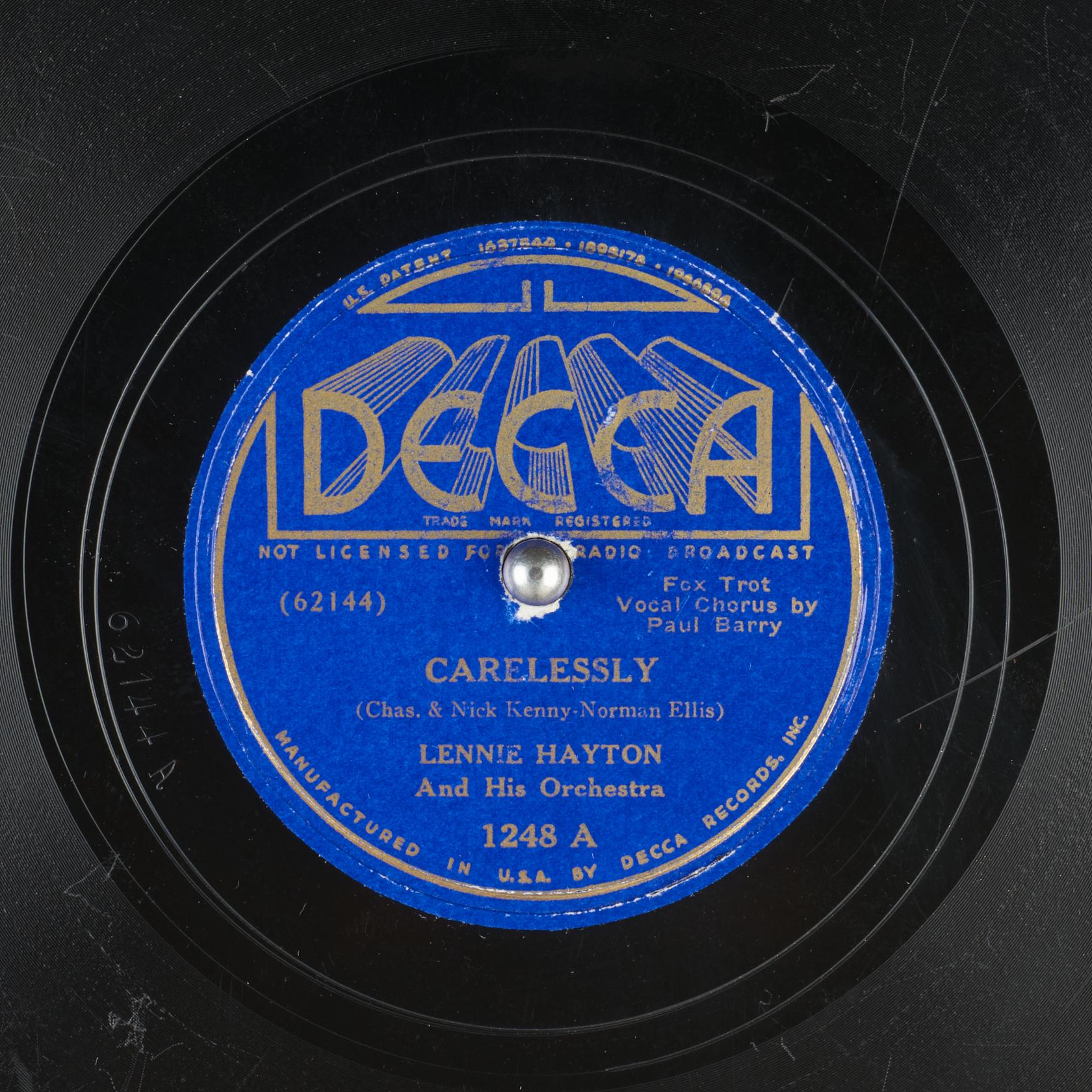
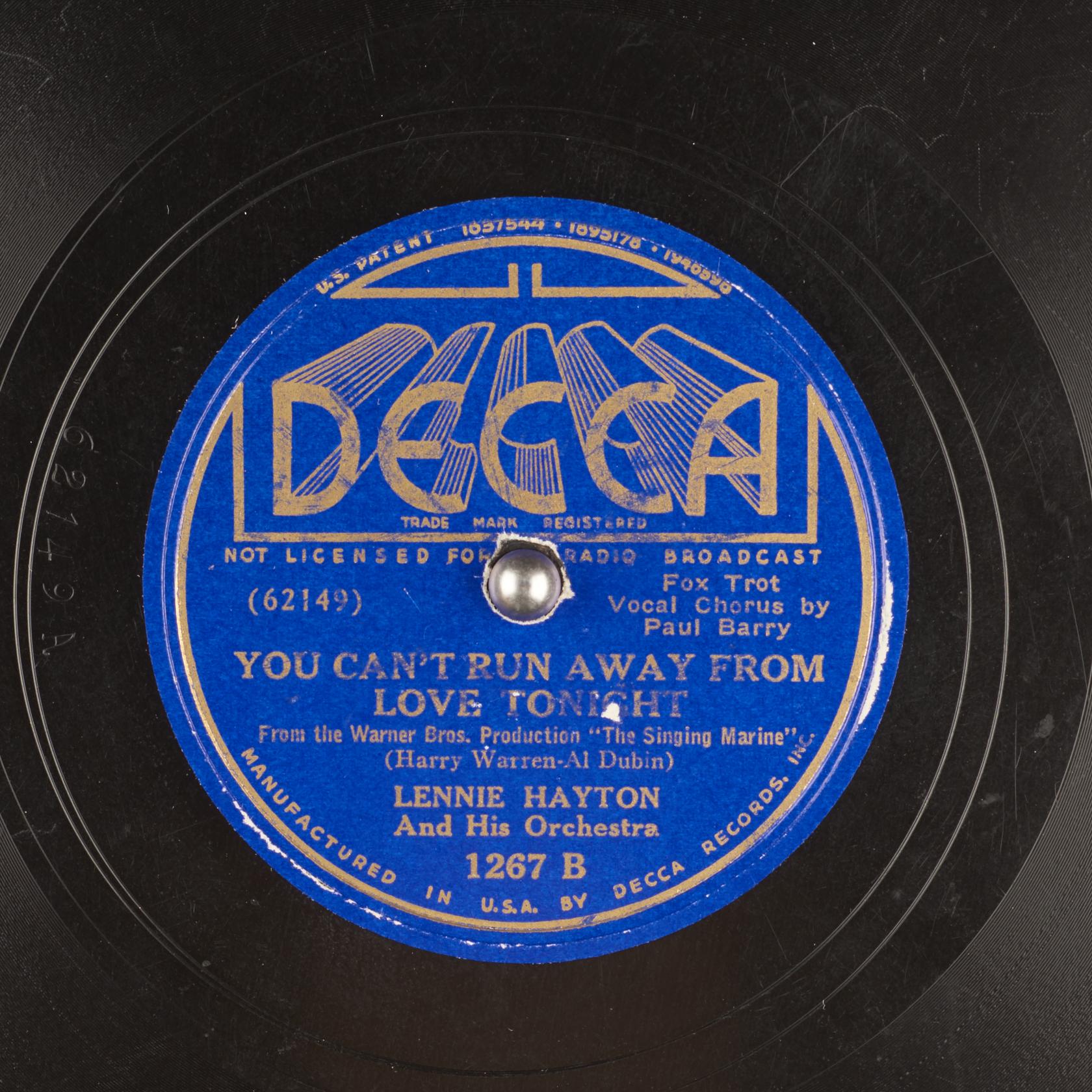
From July 1st, 1937 are two songs that I’ve particularly enjoyed by other artists as well, “The Folks Who Live On The Hill” and “That Old Feeling” with Paul Barry again providing the vocals:

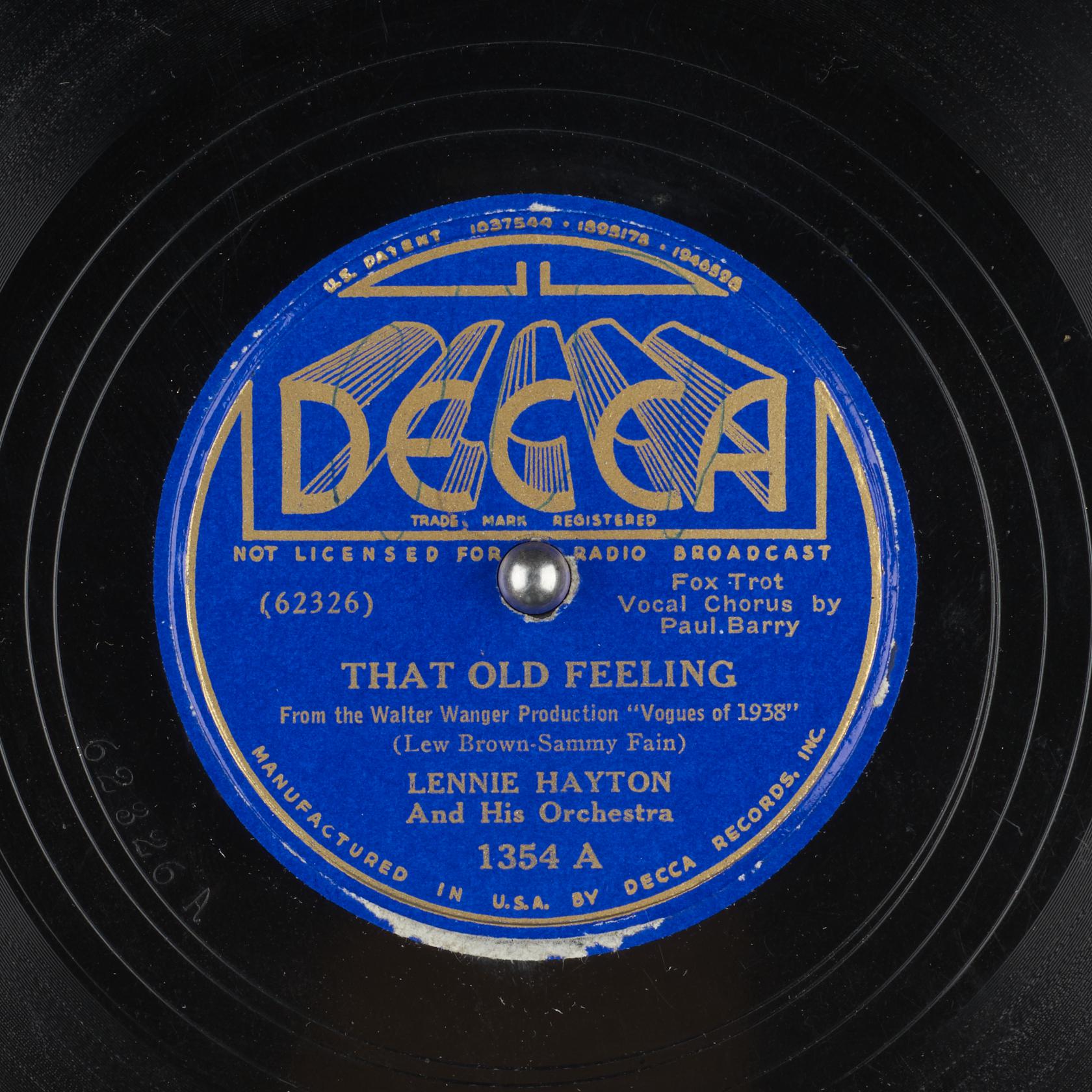
Here are two tracks from the September 8, 1937 session, the aforementioned American release of “Once In A While” and “Make A Wish” with Paul Barry vocals:


I won’t present anything from the December 7th, 1939 session because “Peg O’ My Heart” and “As Long As I Live”are not available and I have already posted “At The Balalaika” and “The Starlit Hour” in my previous blahg, TRACING LINDA KEENE, PART 2: THE MOMENT IN MY LIFE so you can head over there to listen to those two songs. I am going to present three tracks from the last session on February 20th, 1940. Linda Keene also did vocals at that session and I will repost one of those tracks because I think it’s one of the most haunting vocals that she performed with Hayton. Here are “AC-DC Current”, which the Angelfire website claimed was a Magnificent side, probably Hayton’s best! Following that is Linda Keene doing the vocal on “I Love You Much Too Much” and a Youtube post of “Times Square Scuttle.”
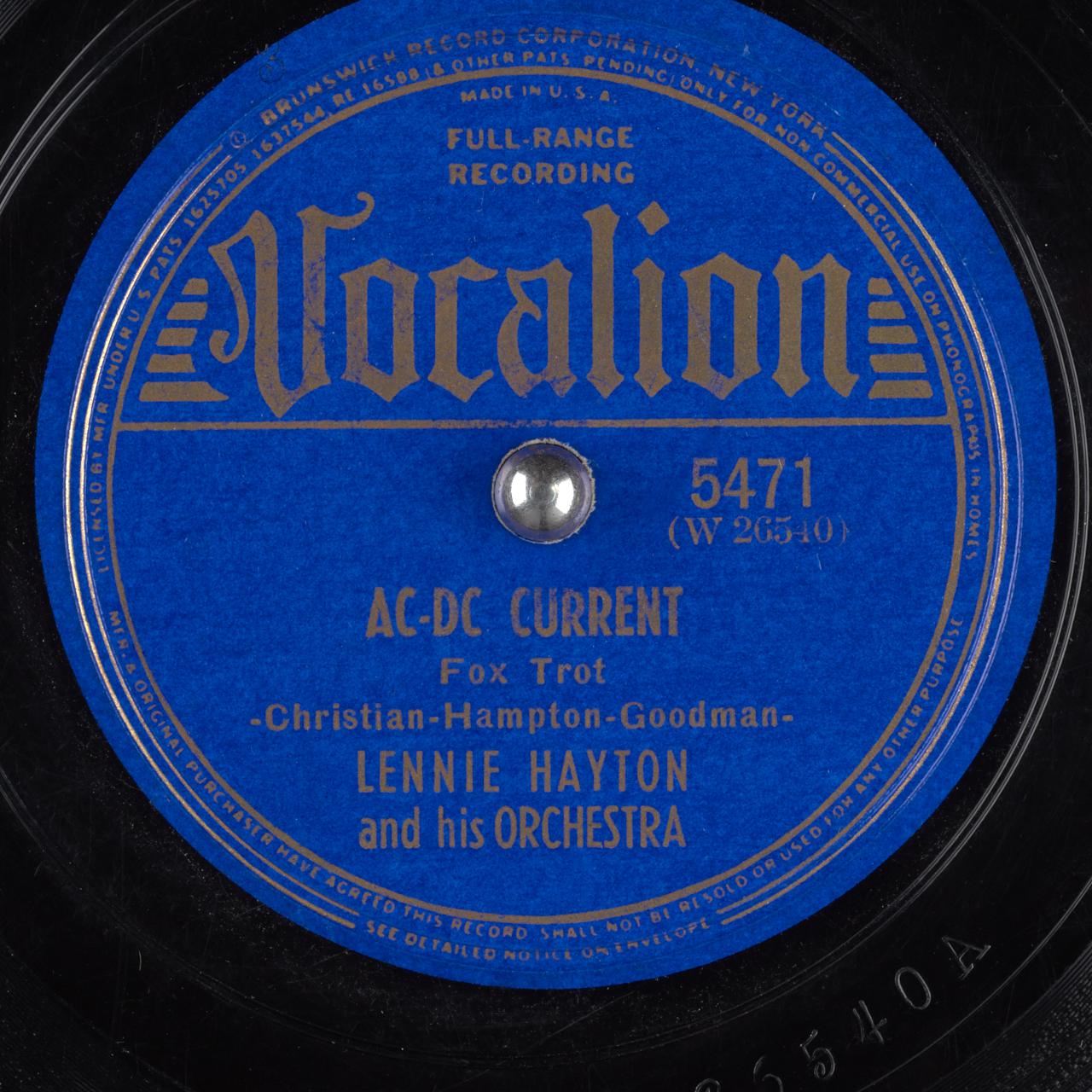
:format(jpeg):mode_rgb():quality(90)/discogs-images/R-9891523-1537457174-1229.jpeg.jpg)
That’s it. I hope you’ve enjoyed these Forgotten Bands. There’s some good music here and I hope you take some time to follow the links and listen to some of the other recordings by these bands that are almost lost to time.
Tags: Bob Chester and His Orchestra, Coleman Sachs, Emmerson Gill, Jack Linx, Lennie Hayton and His Orchestra, Pinkey Hunter, Scott Fisher and His Orchestra, Scott Henderson. False Ducks, Willie Farmer and His Orchestra
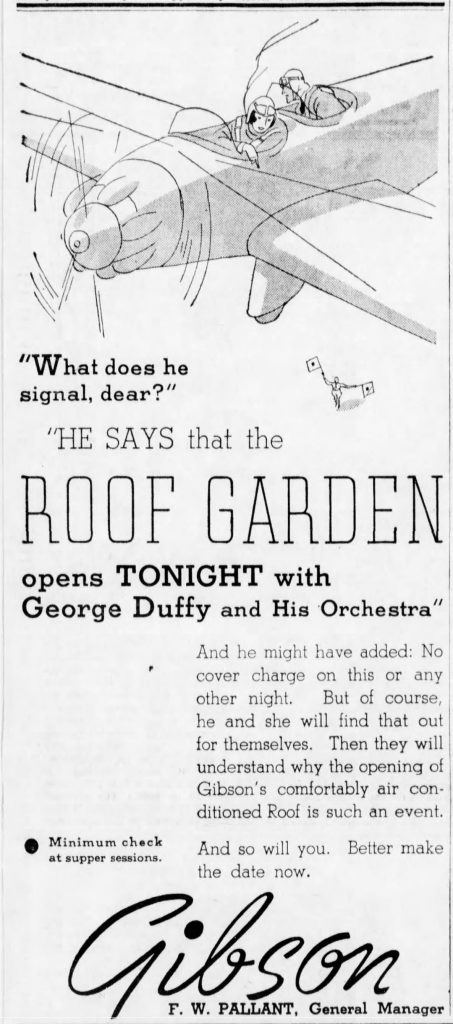
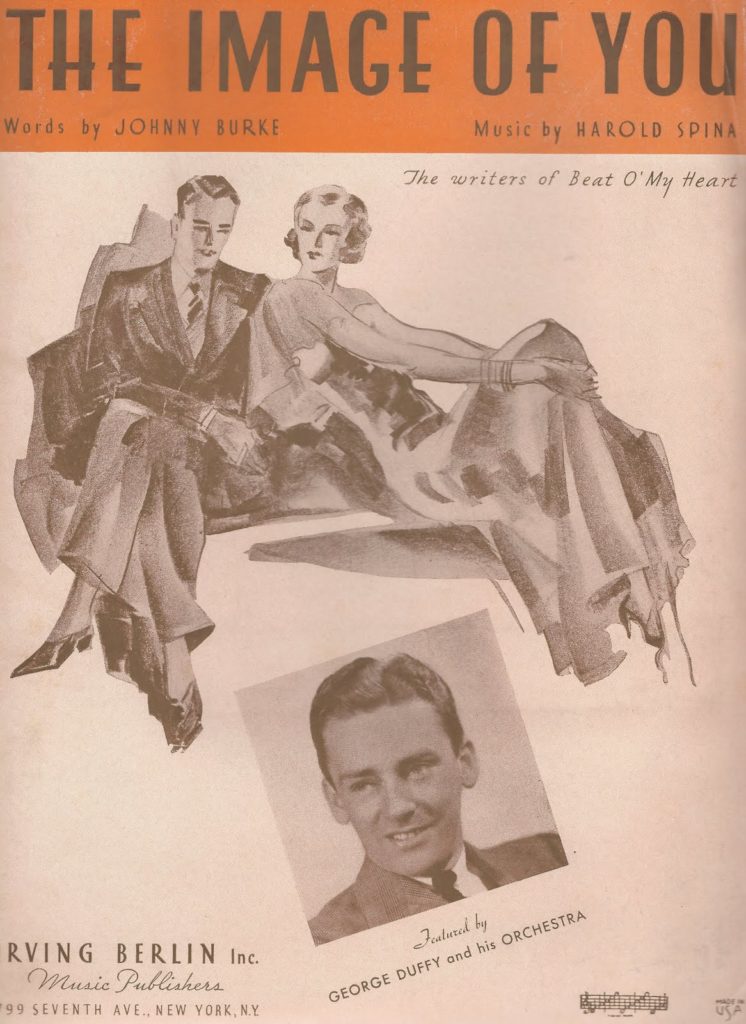
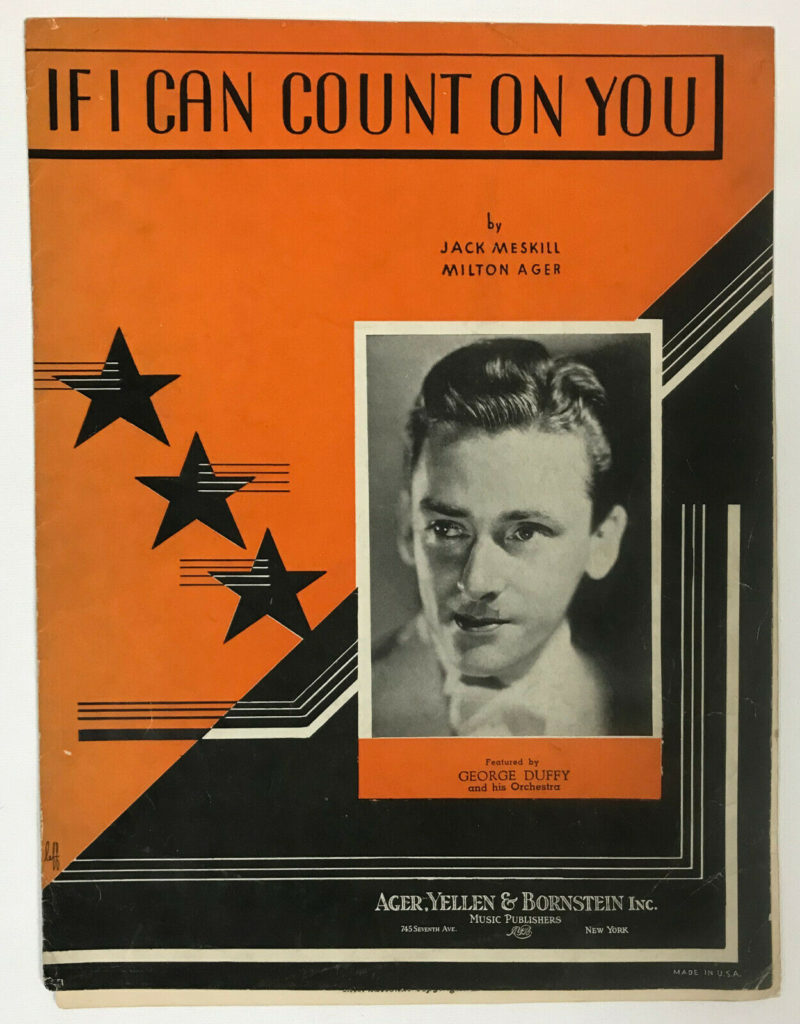
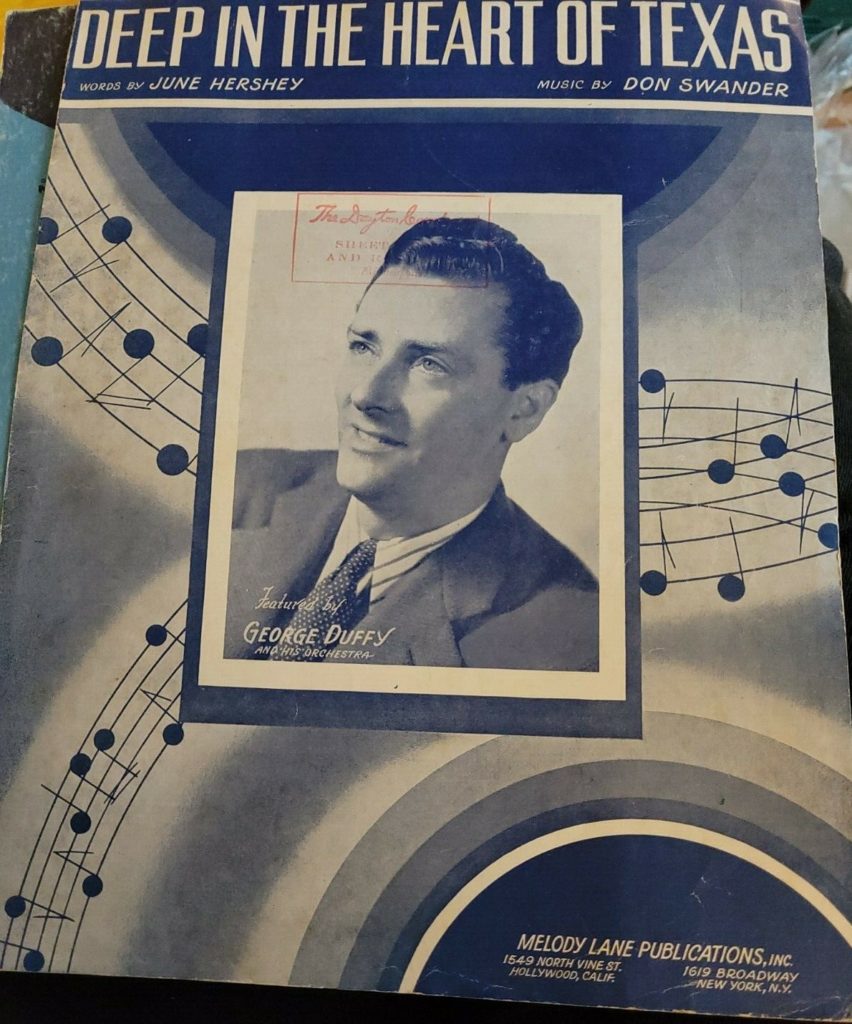
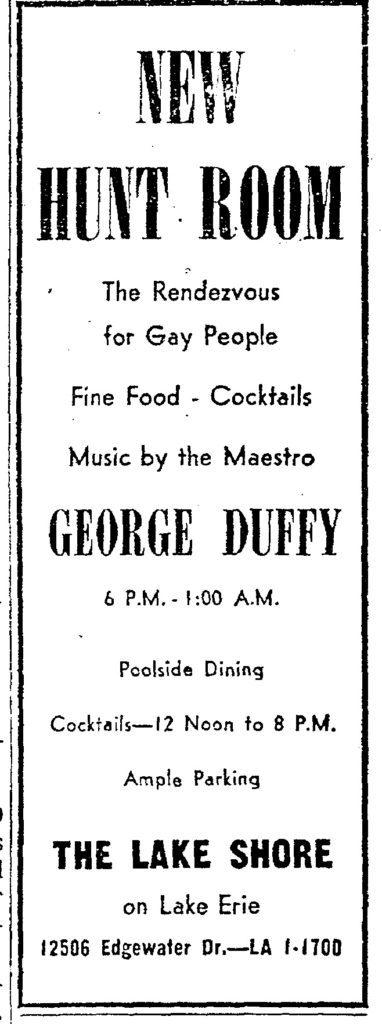
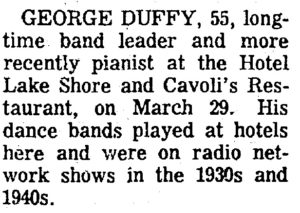
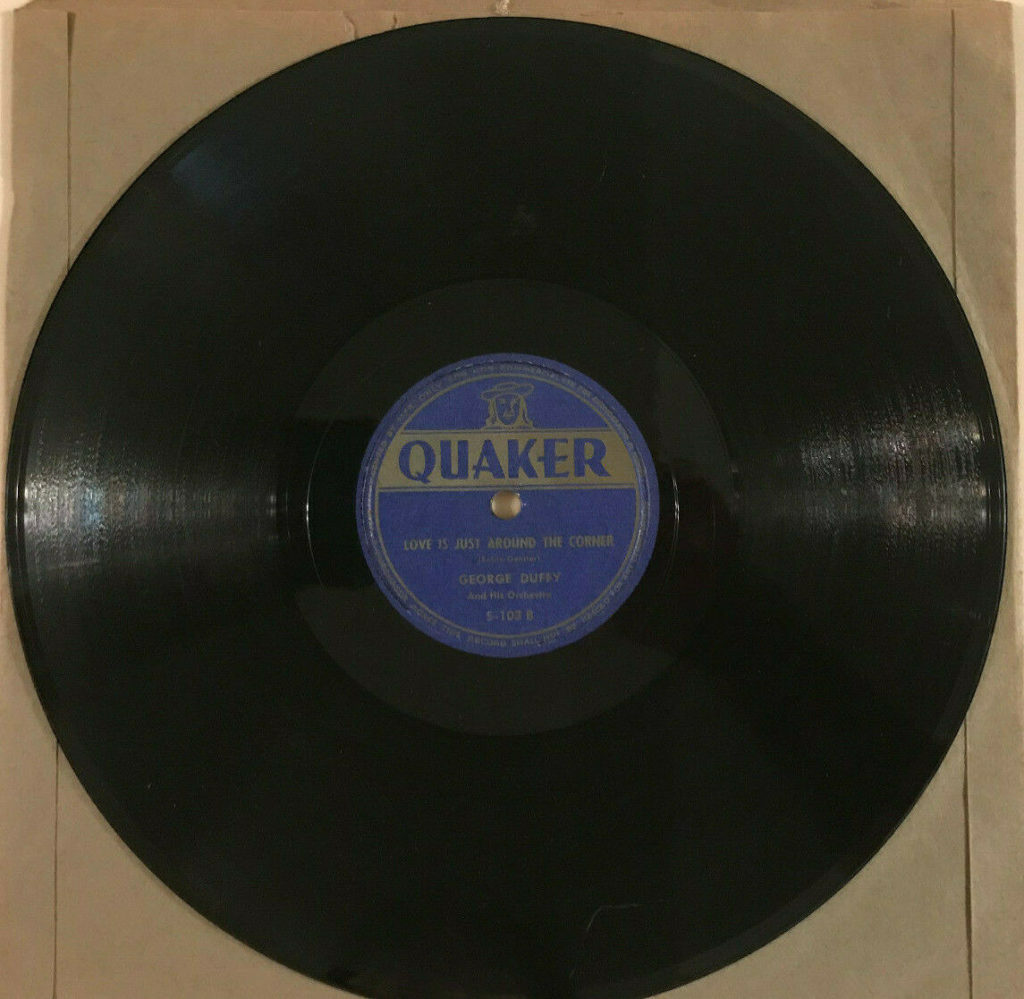
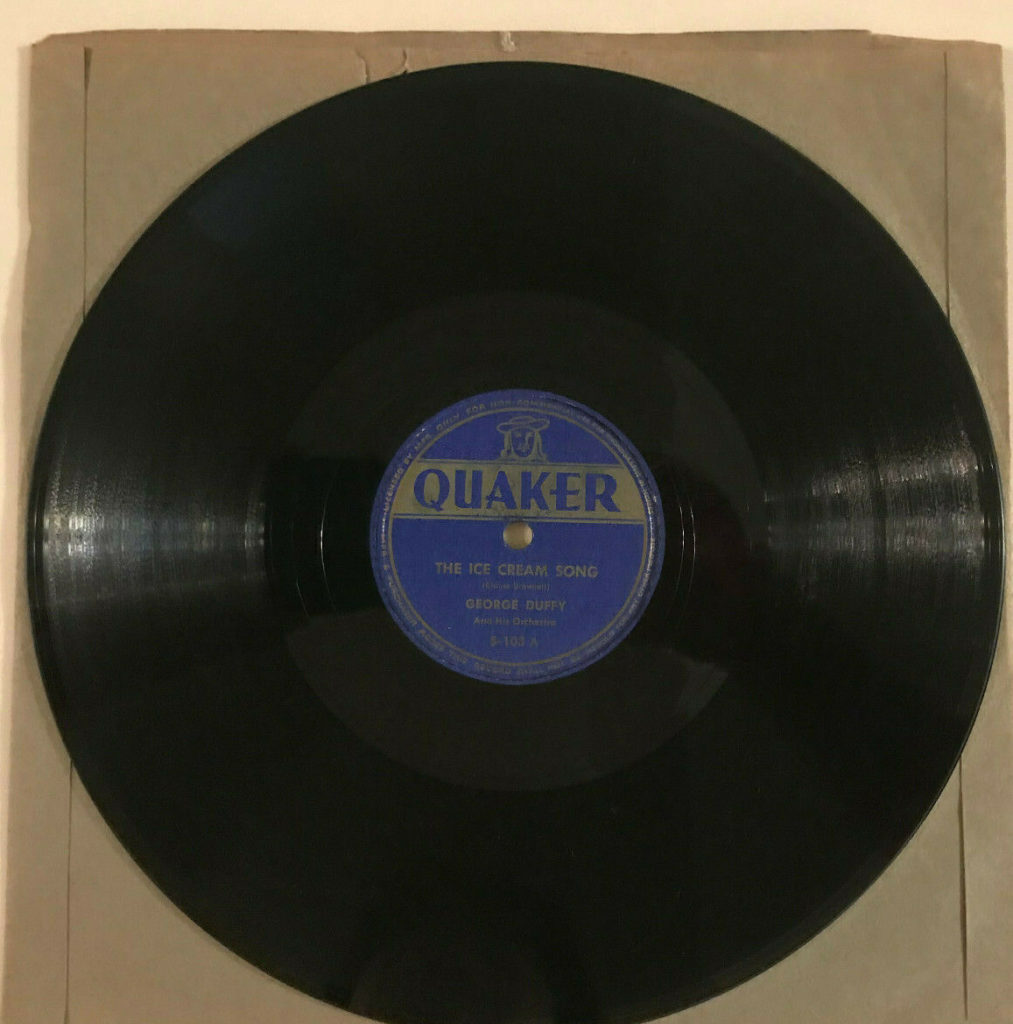

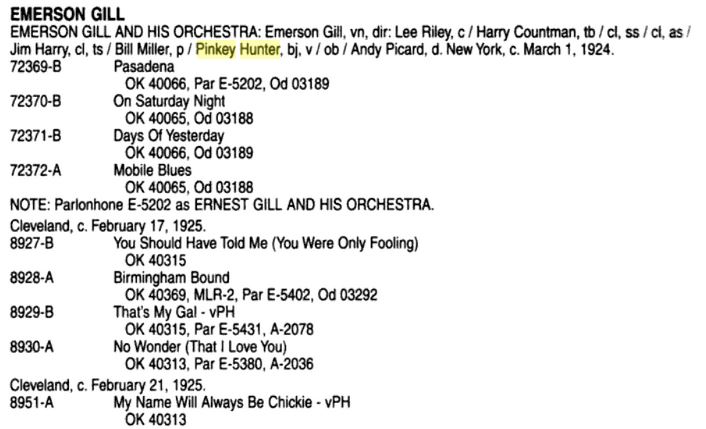
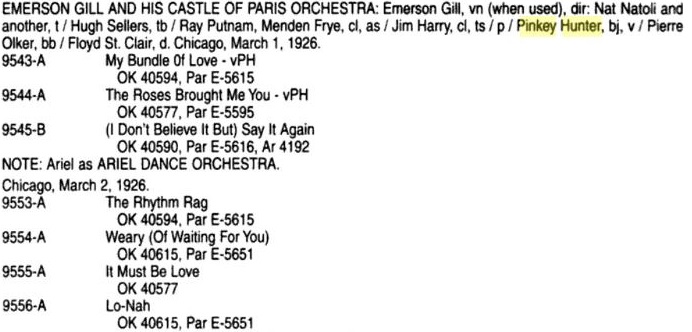

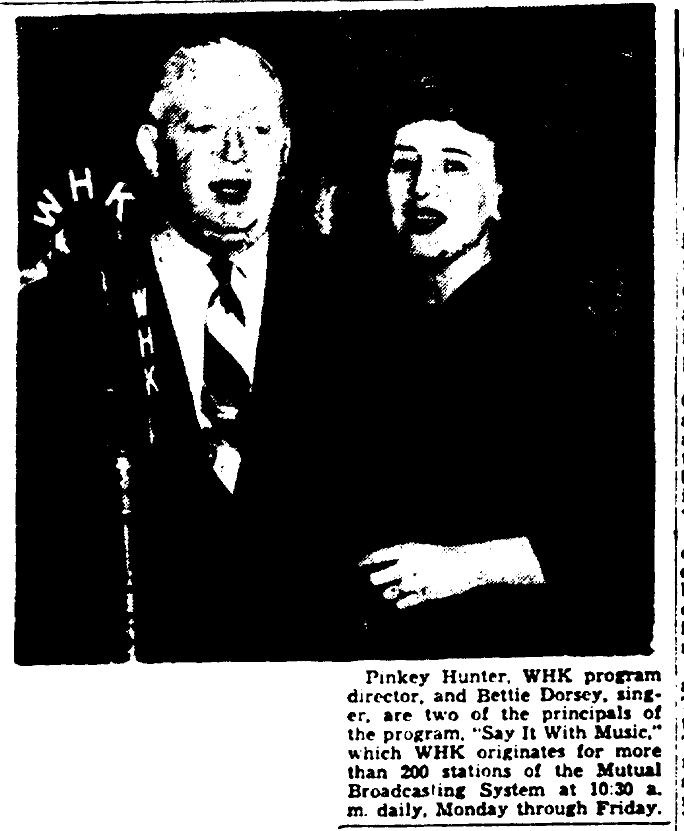
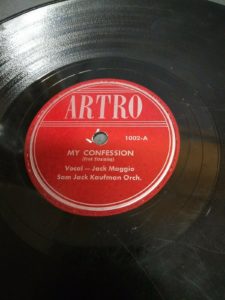
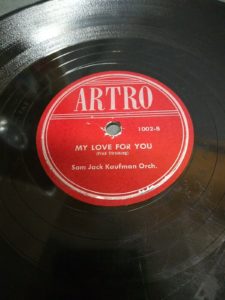
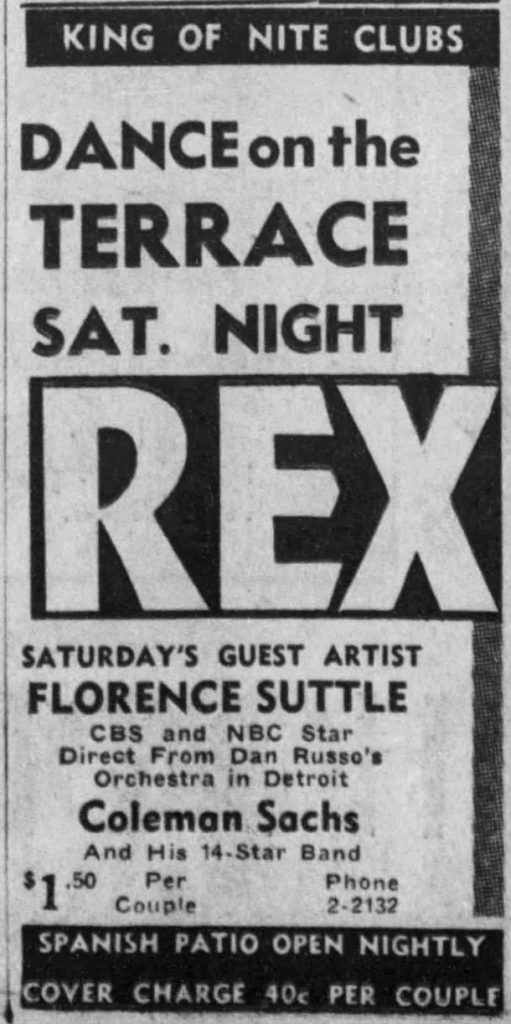
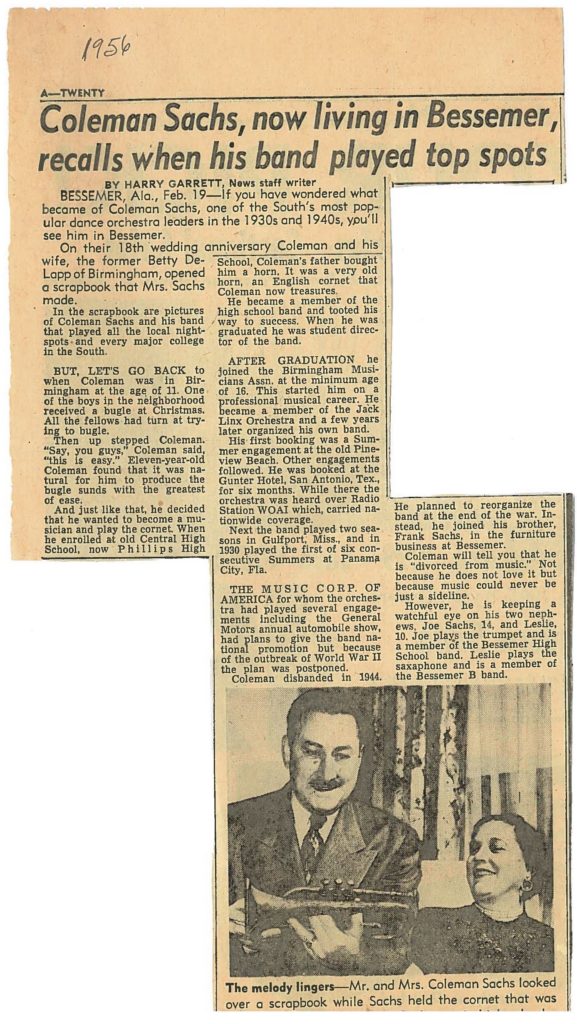


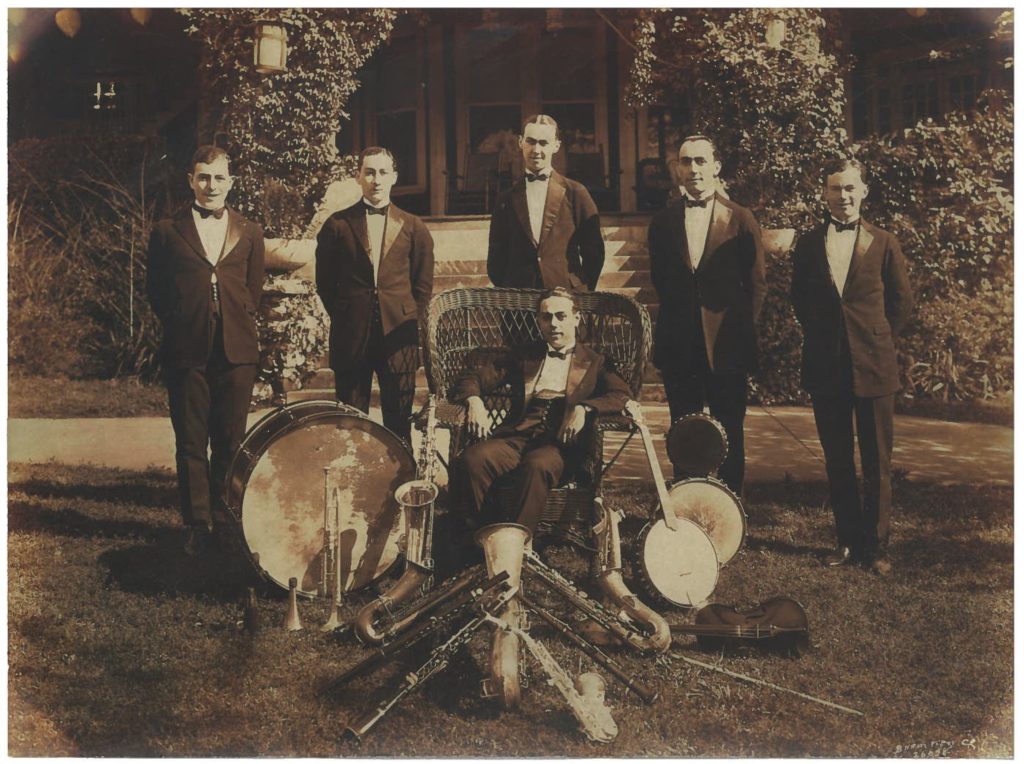


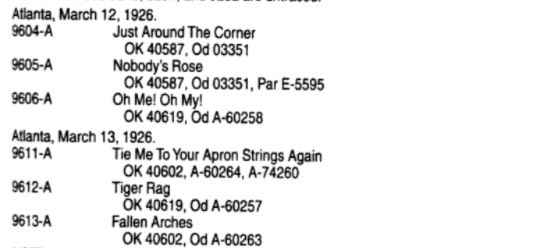

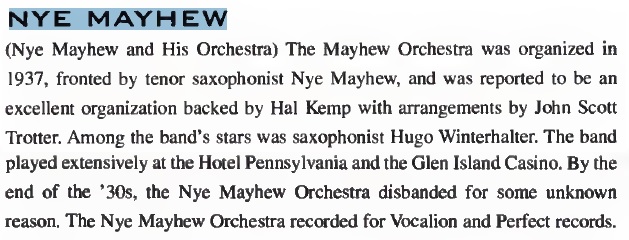
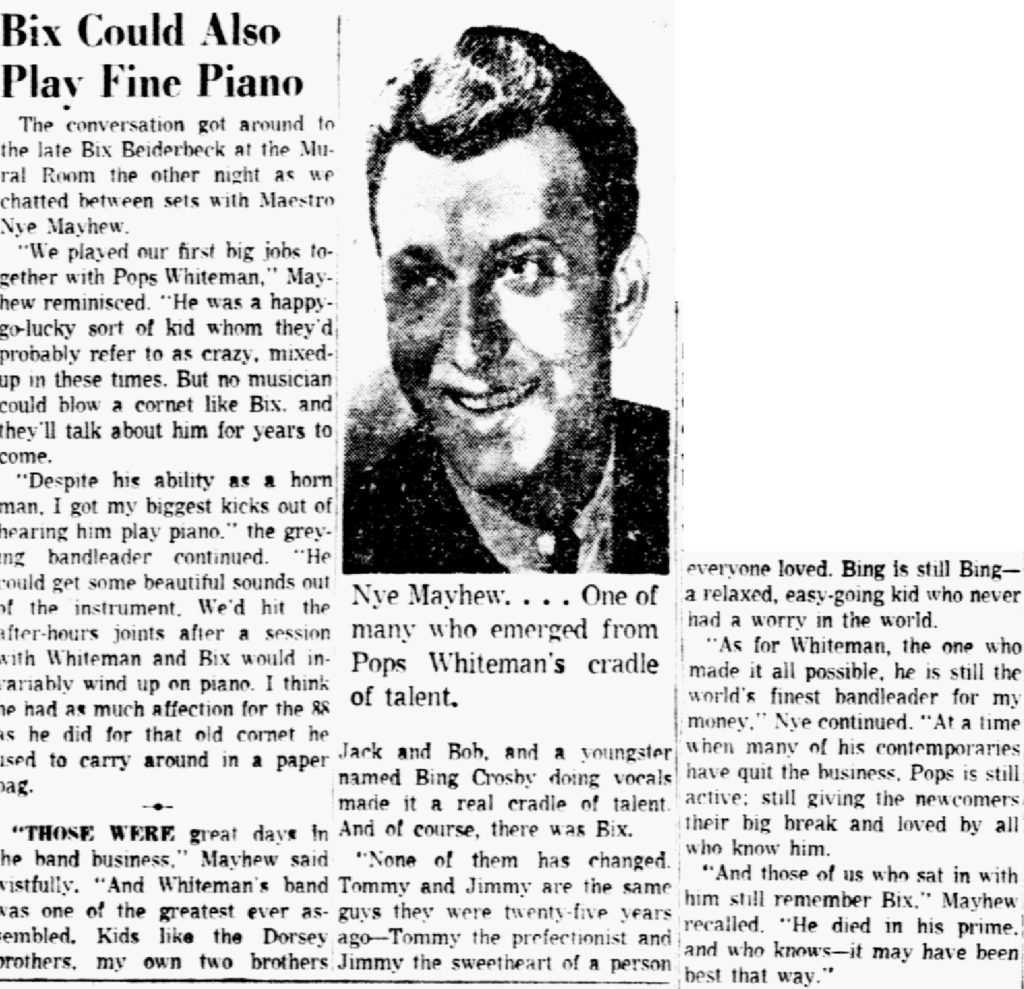
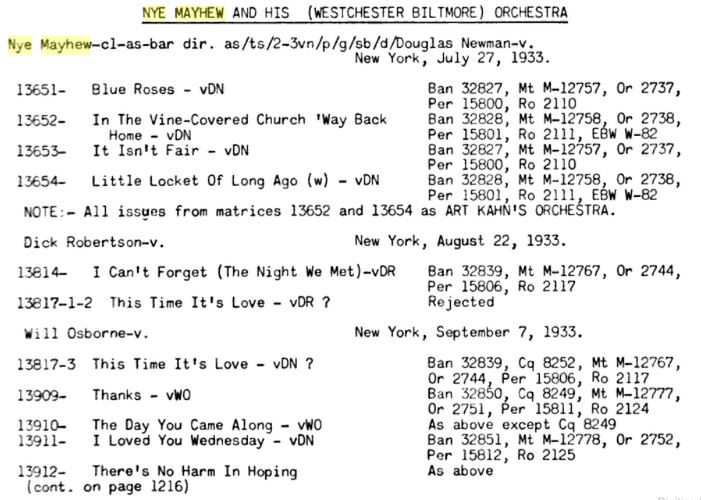


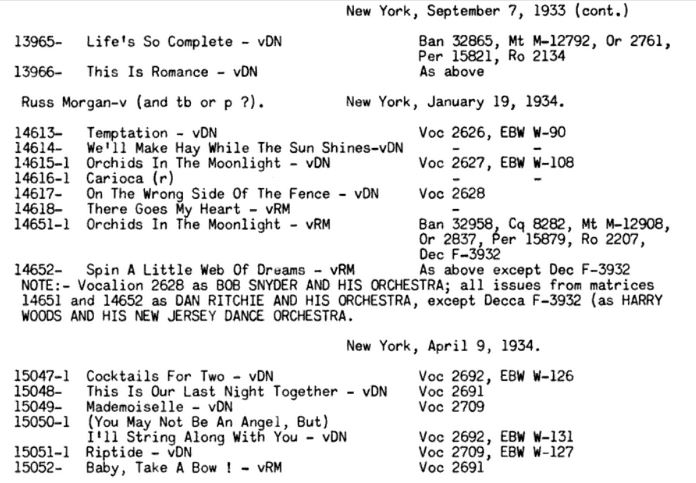

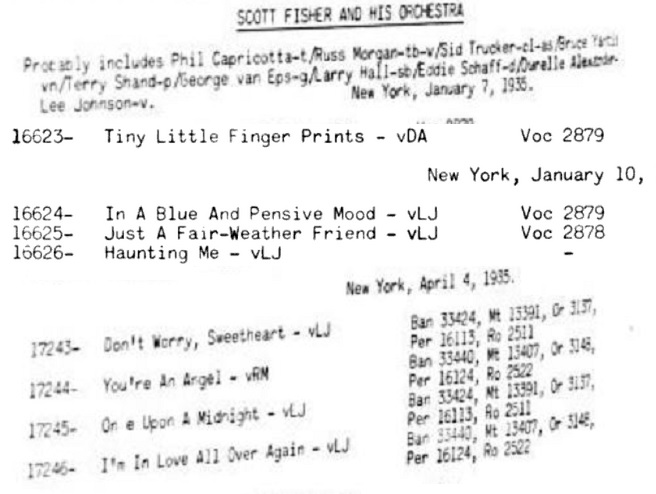

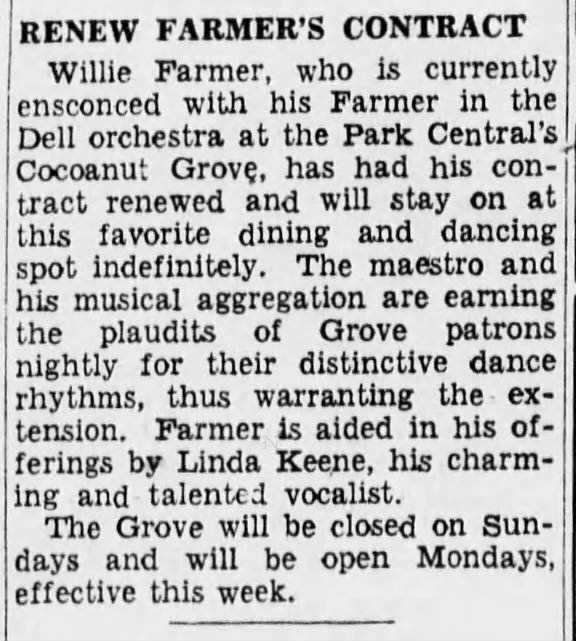



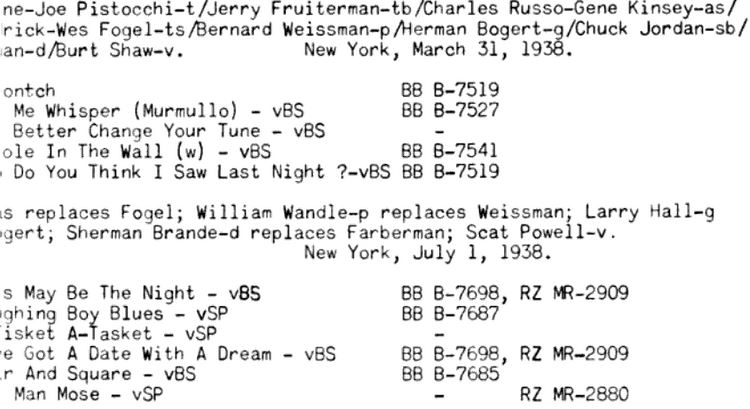
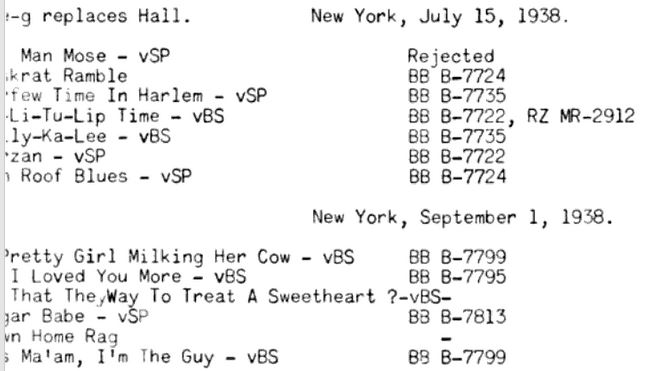

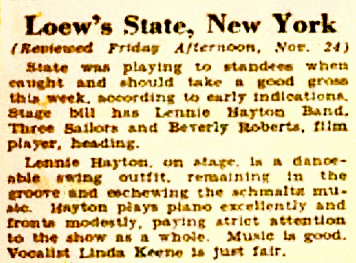
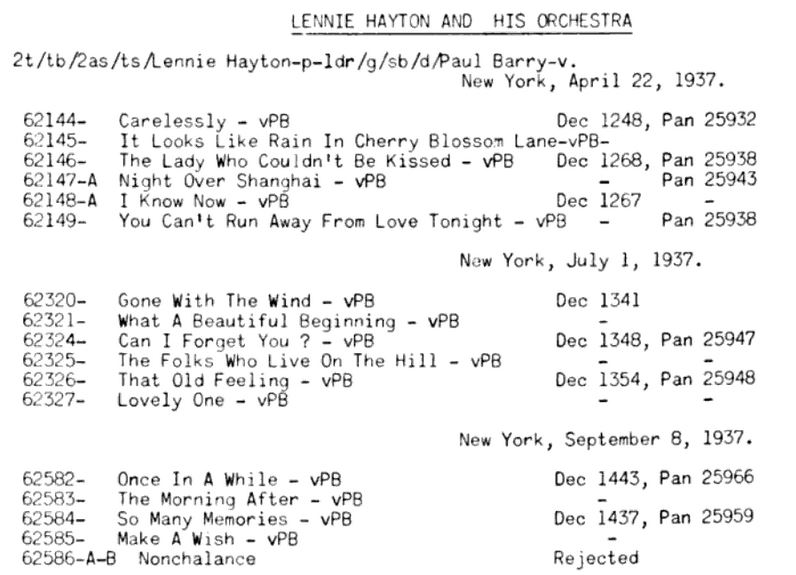
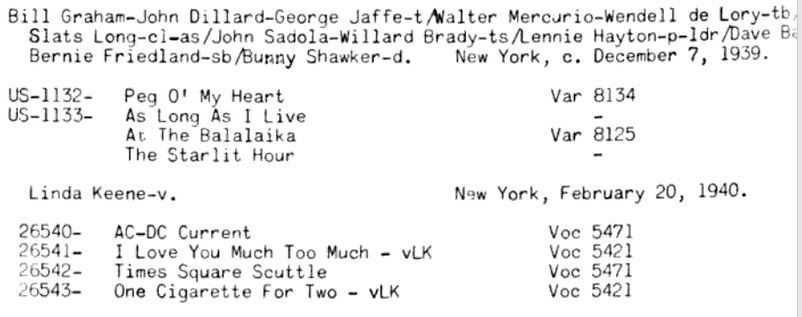
[…] I haven’t even heard of them” blahgs. At the end of April I published “SOME FORGOTTEN BANDS…WITH A NOD TO LINDA KEENE” and brought to life some information and songs by some long lost bands. This time I […]